
Cell-type atlas and neuronal connectome of the Platynereis dumerilii three-day-old larva
ZooCELL 1st Practical Course | 03-14 February 2025, COS and EMBL, Heidelberg
Centre for Organismal Studies, Heidelberg University
Mastodon: @jekely@biologists.social
What is a larva?

larva
noun ˈlär-və
plural larvae ˈlär-(ˌ)vē, also larvas
1: the immature, wingless, and often wormlike feeding form that hatches from the egg of many insects, alters chiefly in size while passing through several molts, and is finally transformed into a pupa or chrysalis (see chrysalis sense 1a) from which the adult emerges
2: the early form of an animal (such as a frog or sea urchin) that at birth or hatching is fundamentally unlike its parent and must metamorphose before assuming the adult characters
What is a larva?
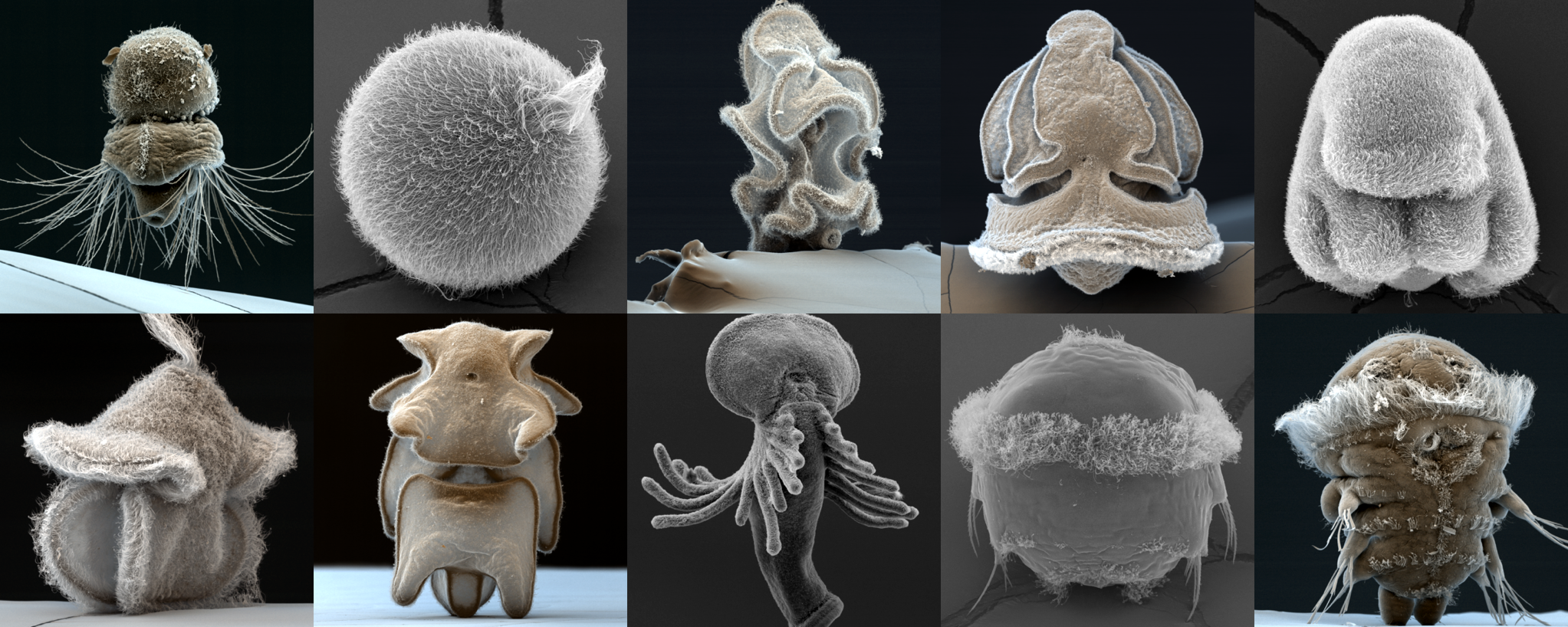
Platynereis dumerilii
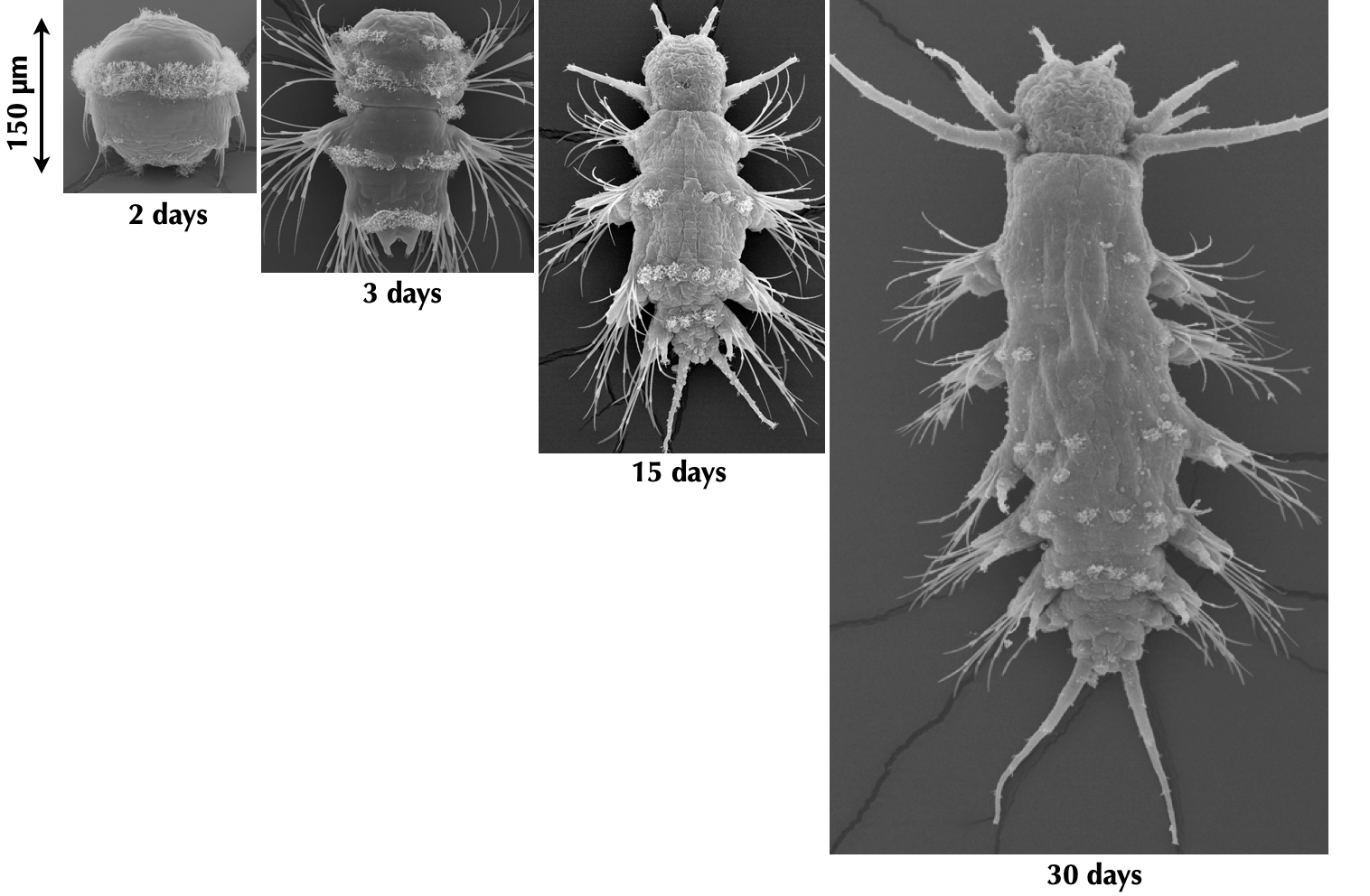
- breeding culture, full life-cycle
- embryos daily, year round
- genome sequence
- microinjection, transgenesis
- neuron-specific promoters and antibodies
- knock-out lines
- neuronal connectome
- whole-body neuronal activity imaging
- whole-animal pharmacology by bath application 😎
What is a larva?
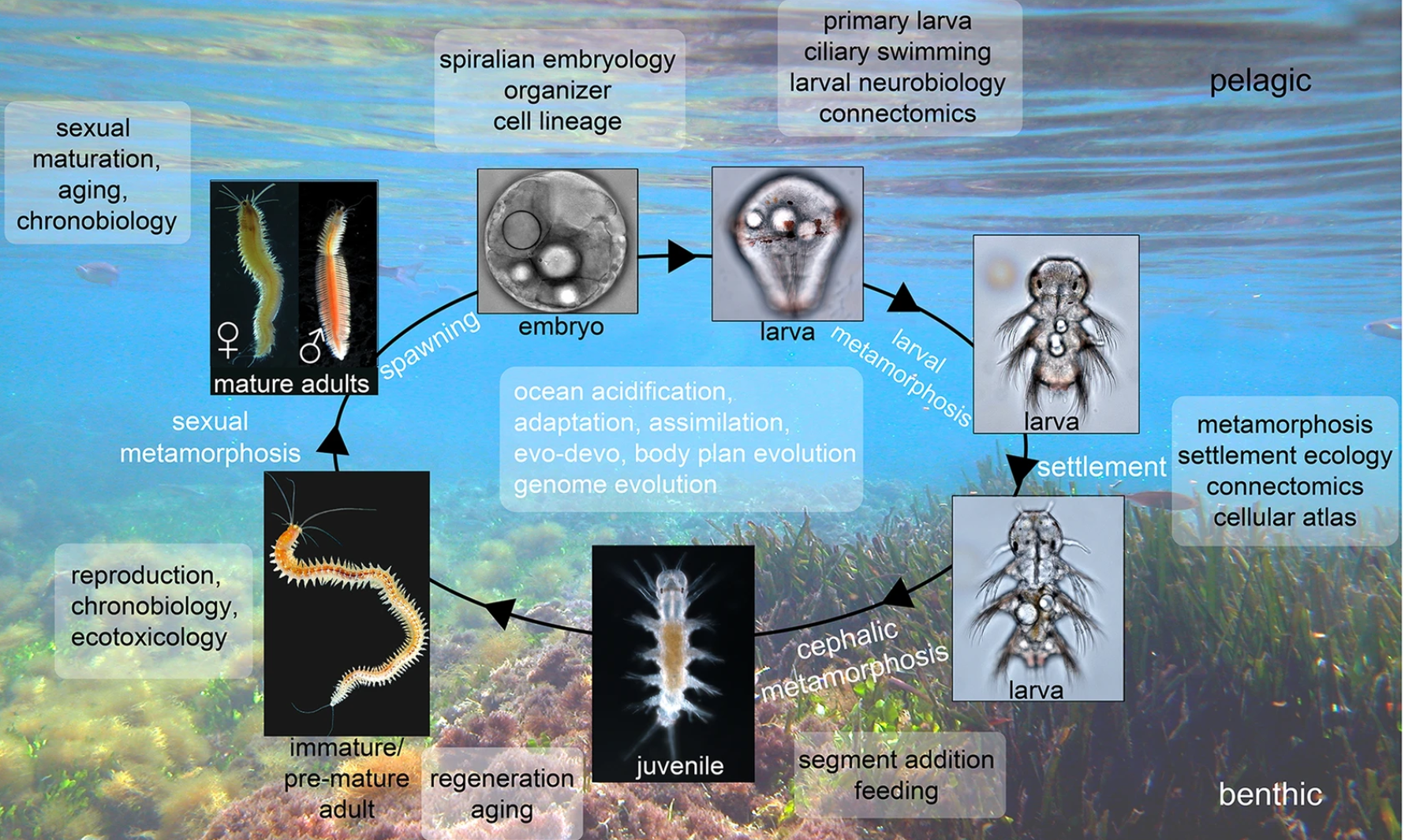
Platynereis dumerilii
- a gonochorostic species
- lecitotrophic non-feeding larvae
- free-swimming planktonic stage
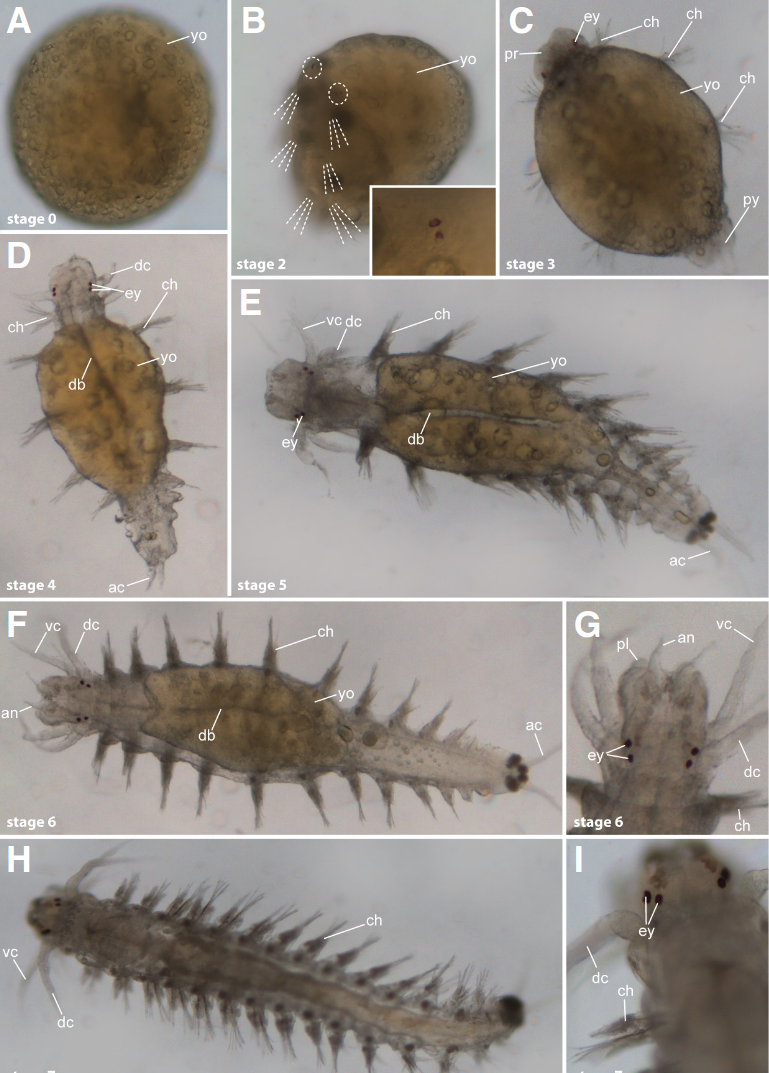
Platynereis massiliensis
- a protandric hermaphrodite
- lecitotrophic direct development in brood tubes
- absence of a free-swimming stage
A real larva vs. a blob
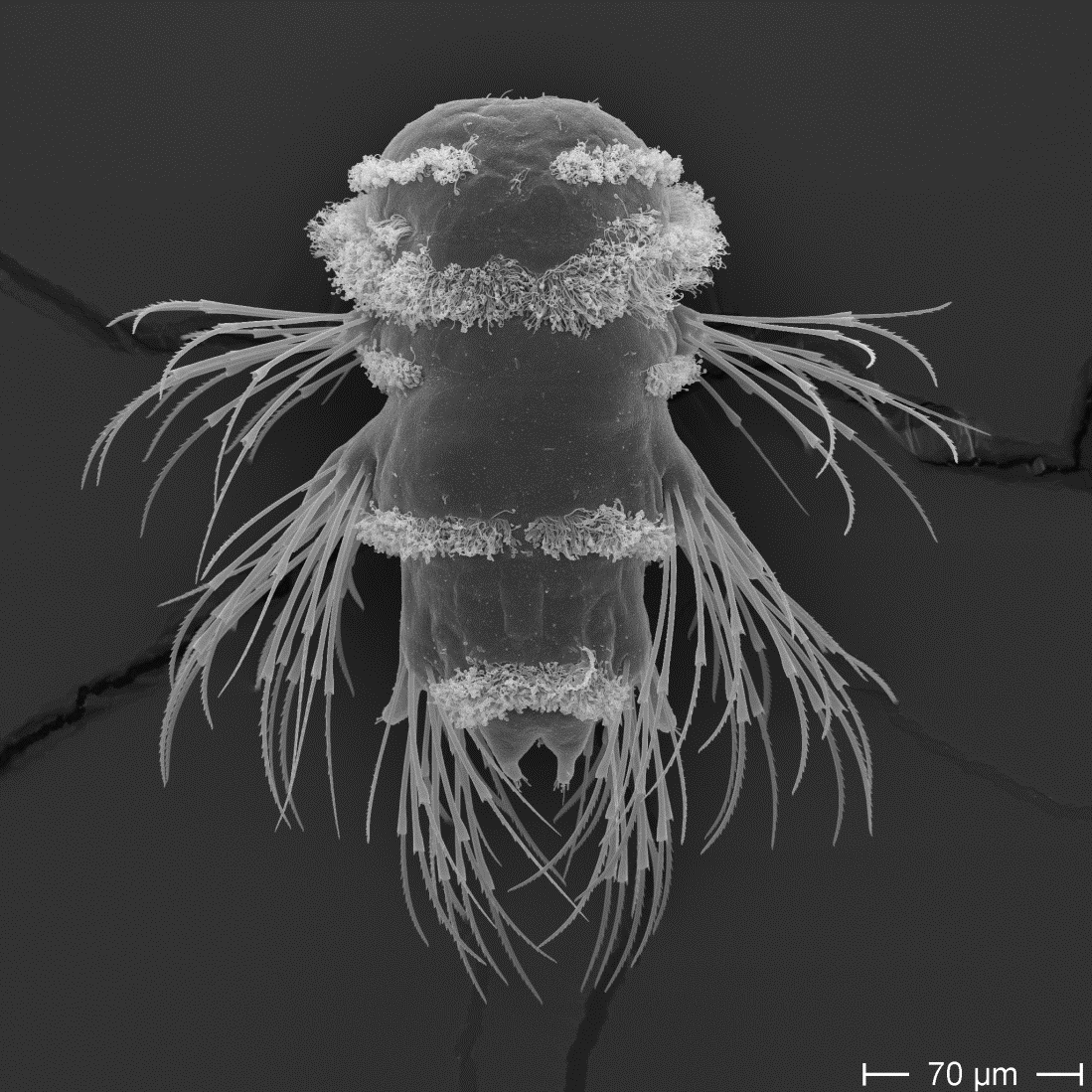
Platynereis dumerilii
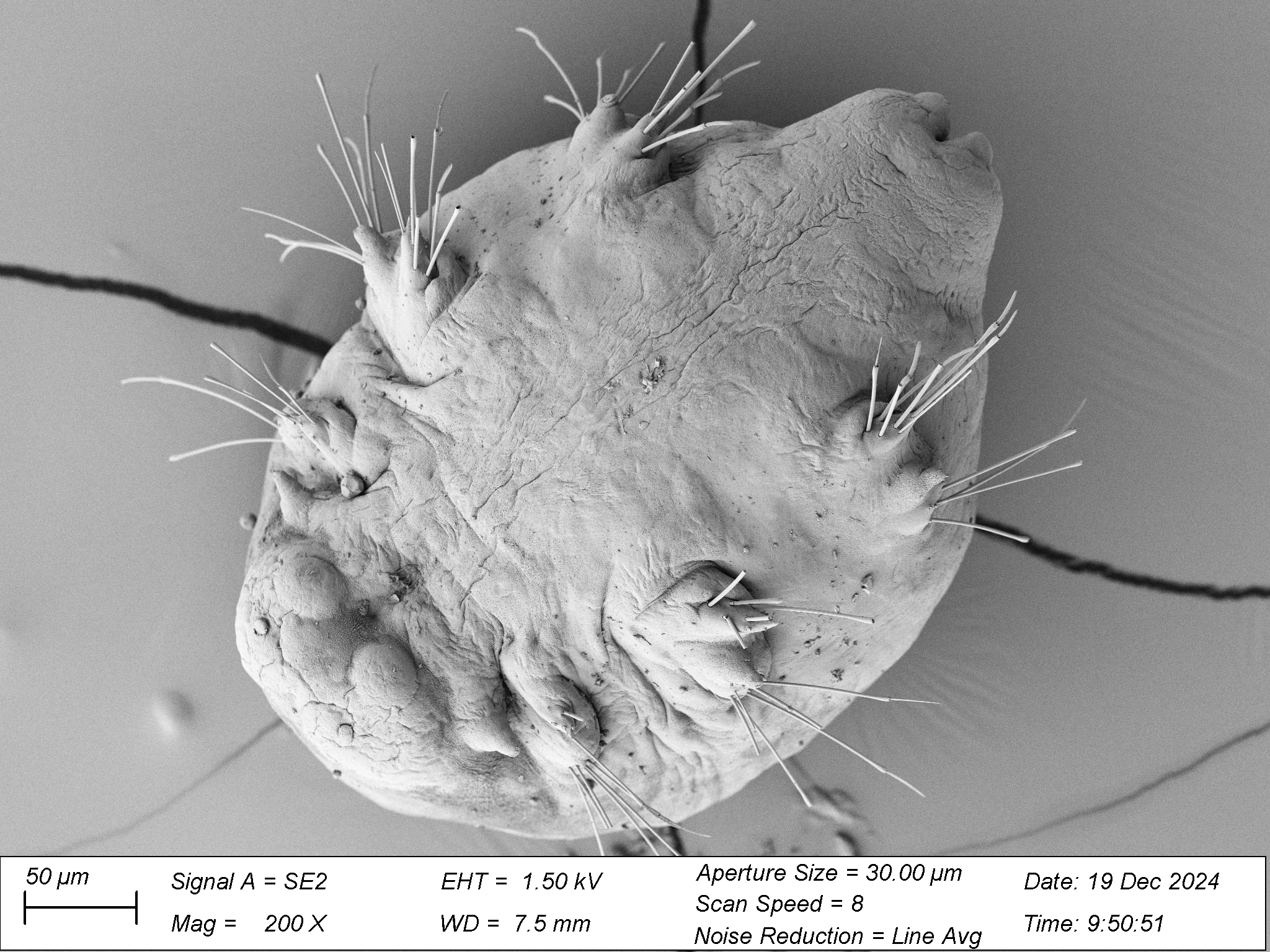
Platynereis massiliensis
“A larva [in a marine invertebrate] is a post-embryonic life-cycle stage that is freely swimming and can be lost during evolution”
Platynereis dumerilii
Spawning
movie by Albrecht Fischer
Synchronously developing larvae
Whole-body volume EM of an entire three-day-old larva
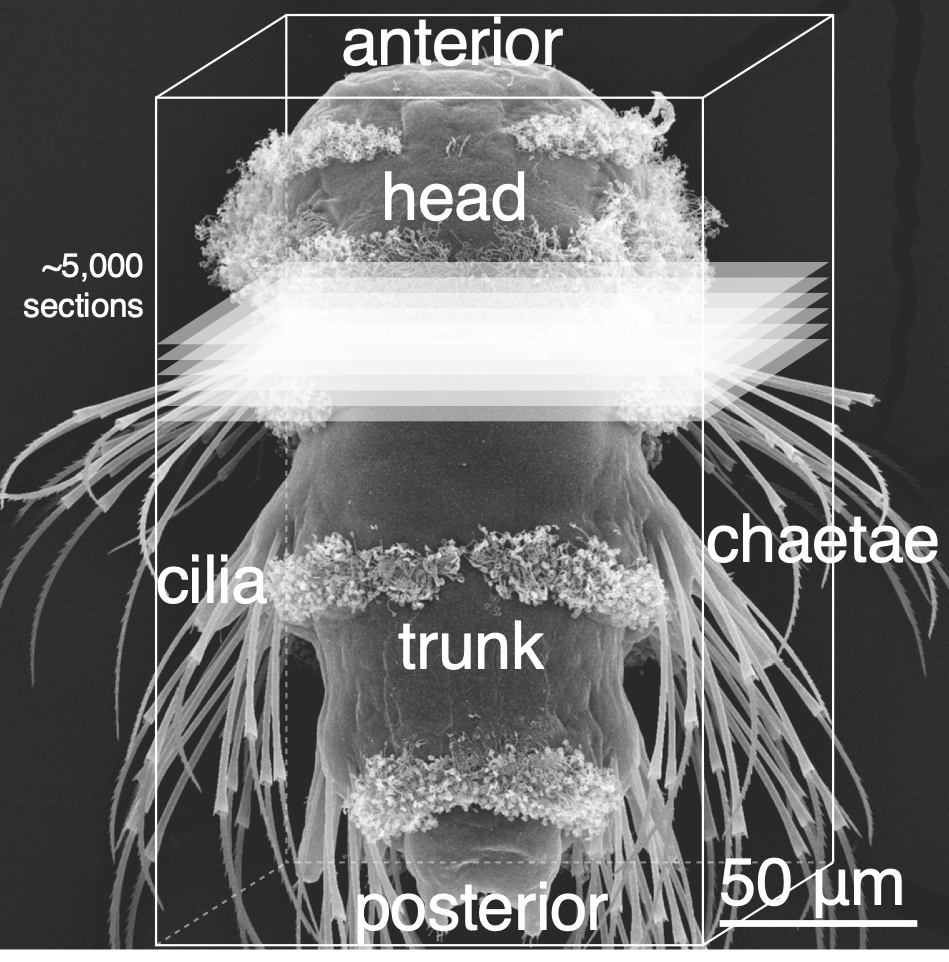
Whole-body volume EM of an entire three-day-old larva

Synaptic connectome
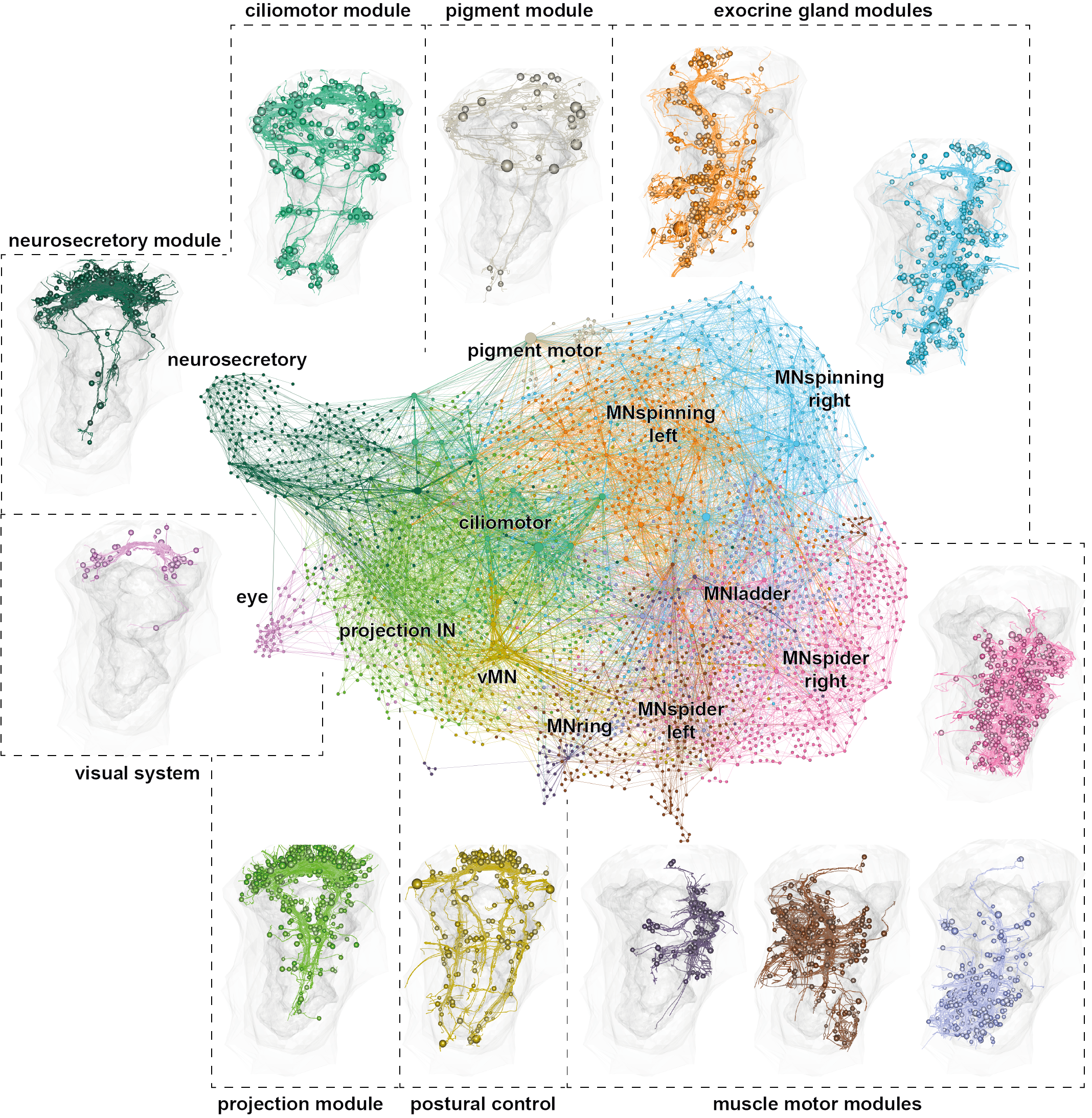
Whole-body coordination of cilia

Whole-body coordination of cilia

Whole-body coordination during startle
Coordinated arrest of all cilia
No arrest in polycystin receptor mutant
Startle recruits body-wide circuits and effectors
UV response in Platynereis larvae
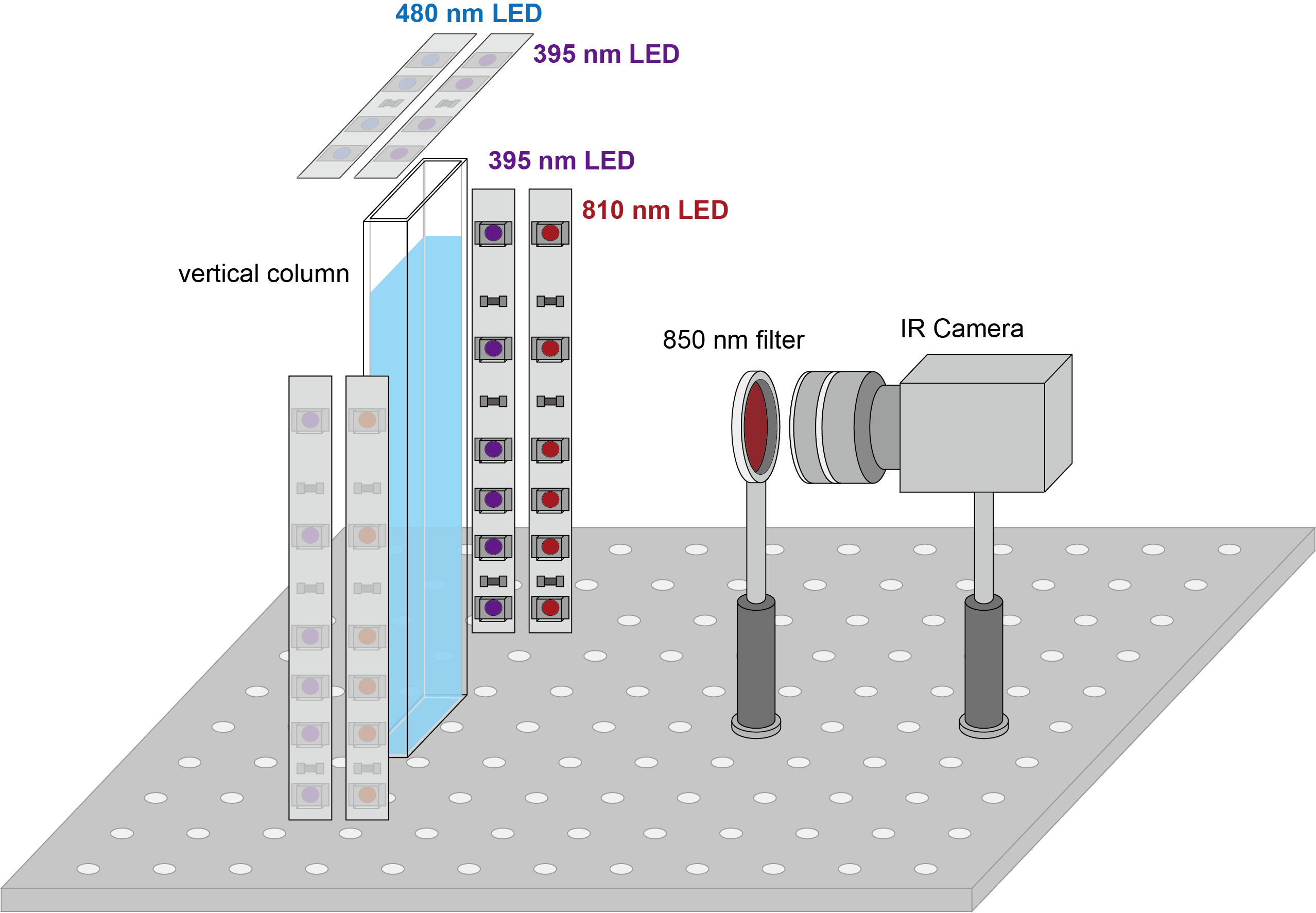
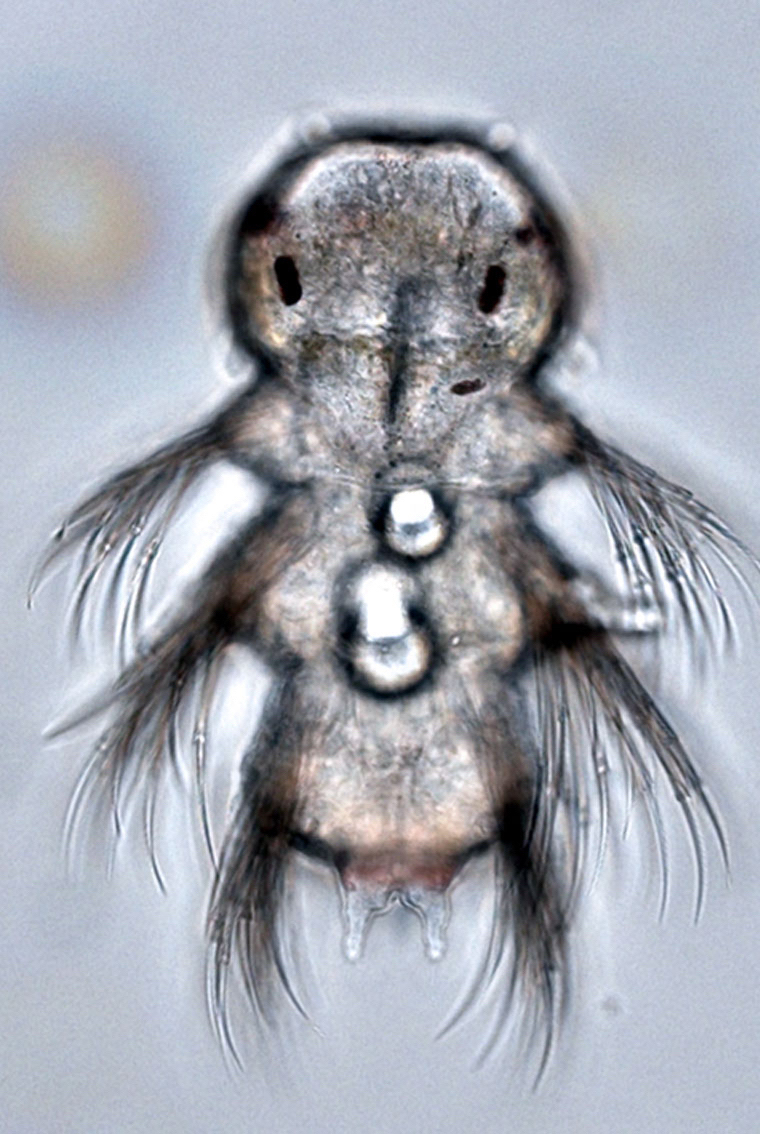
UV response in Platynereis larvae
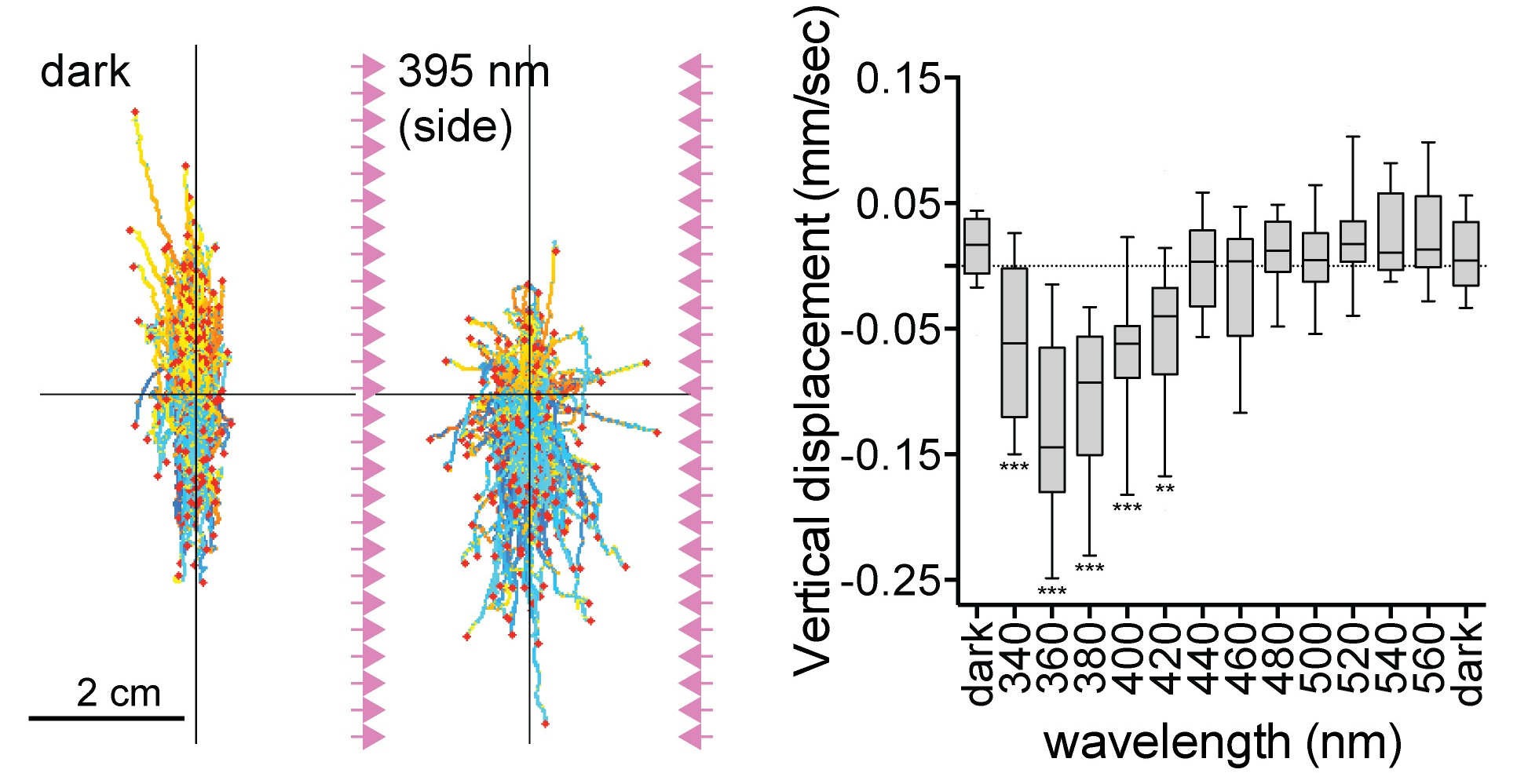
Brain ciliary photoreceptors with ramified cilia

Ciliary photoreceptors express a UV opsin, c-opsin1
Reduced ciliary compartment in c-opsin1 mutants
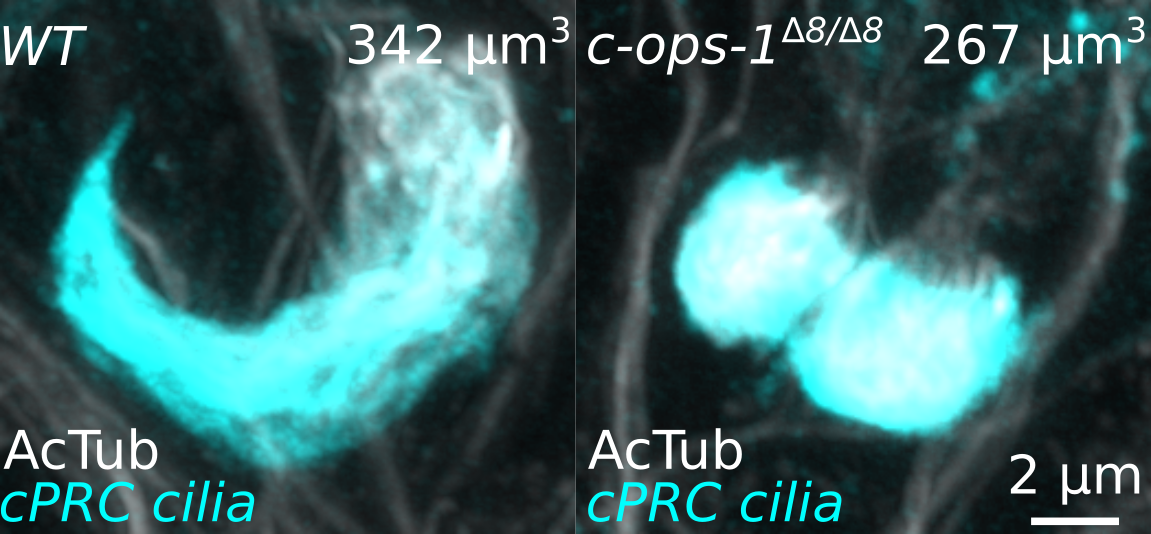
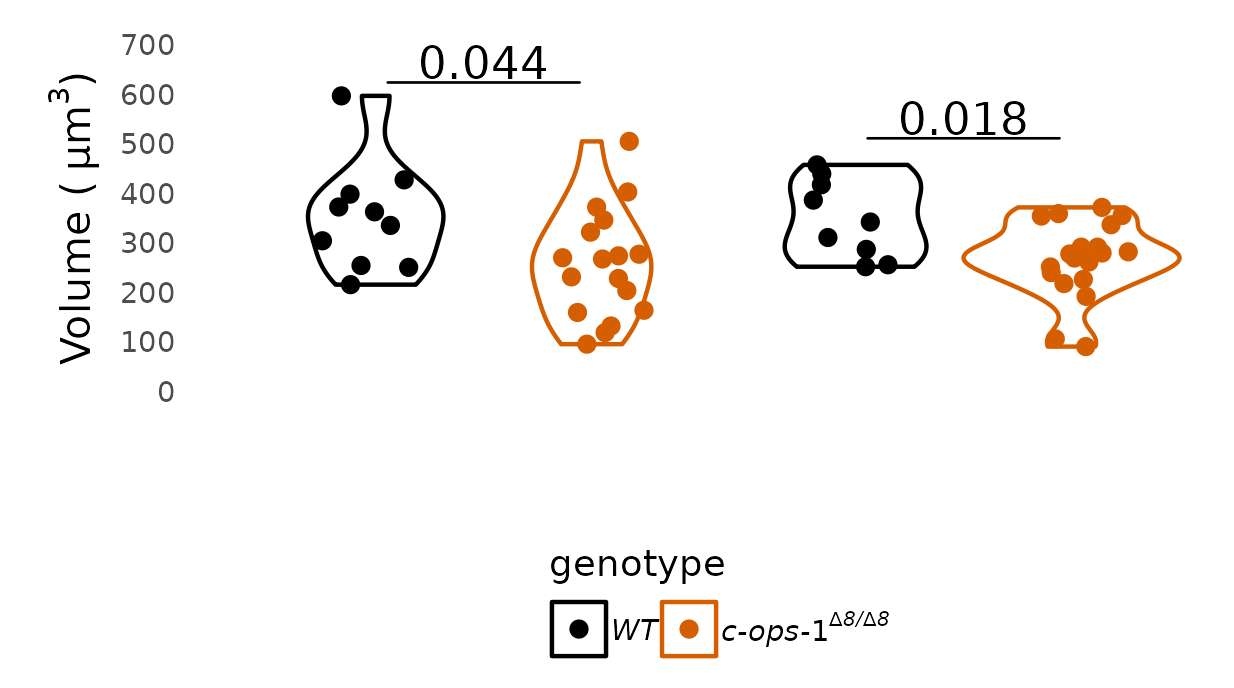
UV avoidance is dependent on c-opsin1
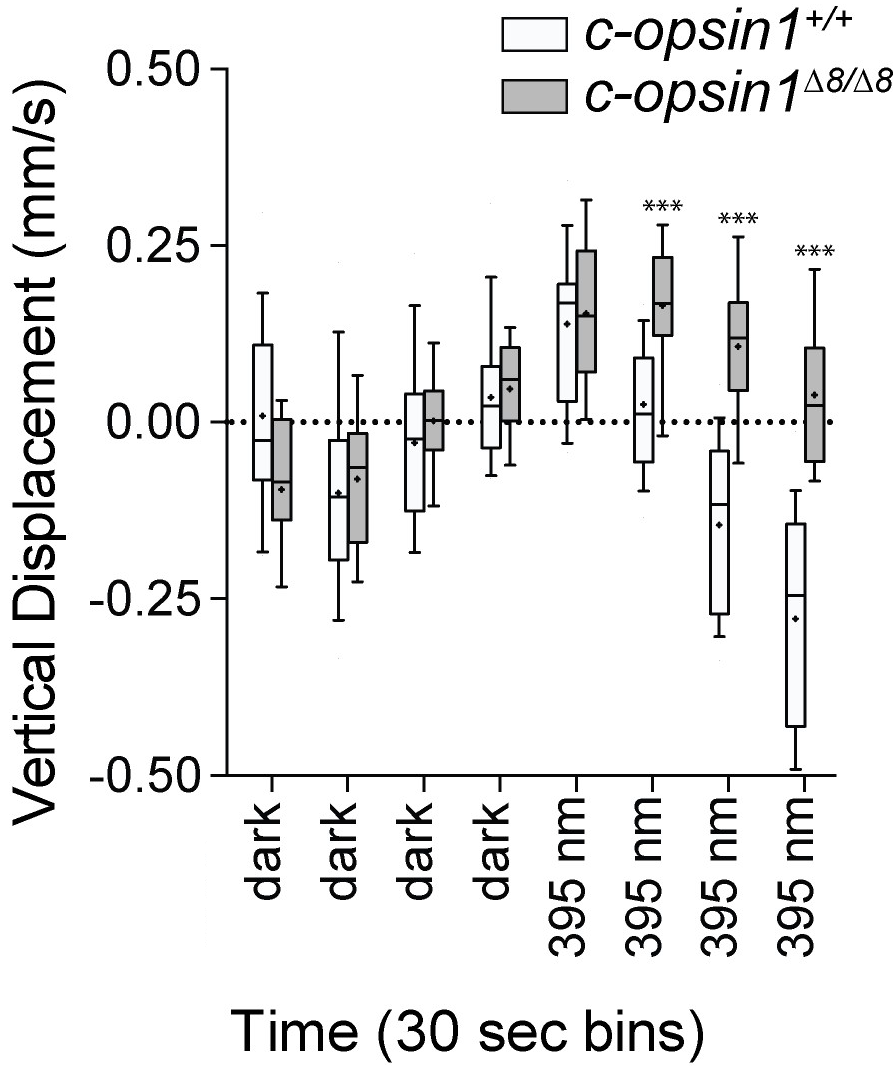
Head neuropils and connectivity

Circuitry of ciliary photoreceptors
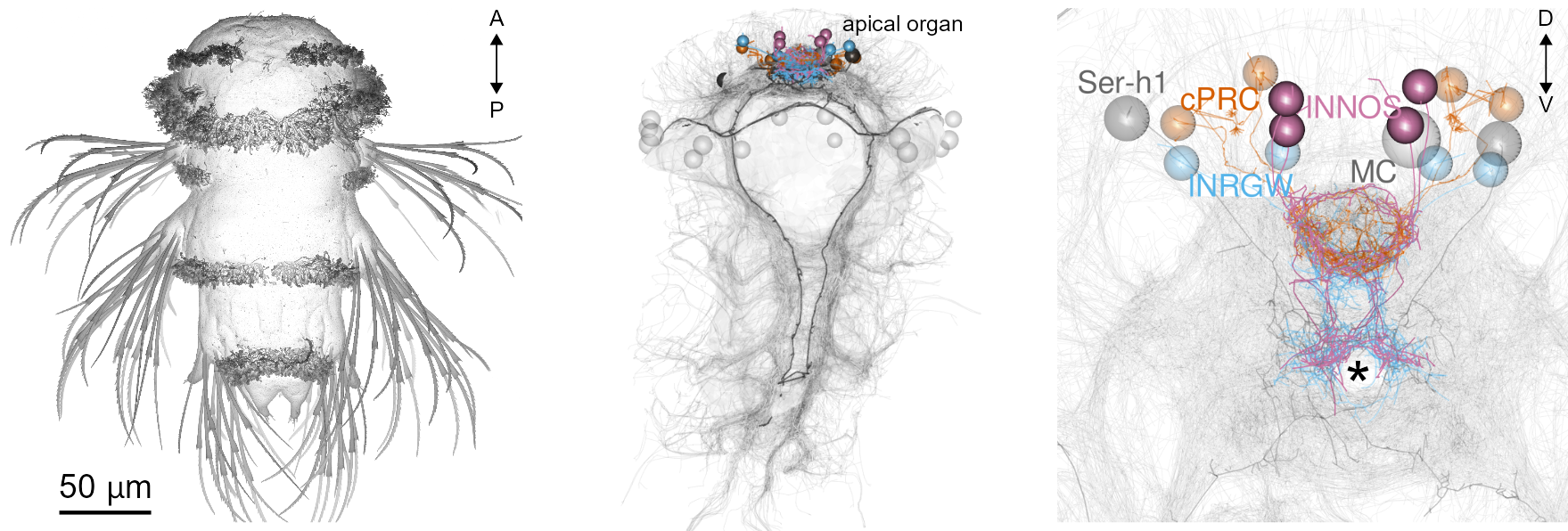
Circuitry of ciliary photoreceptors
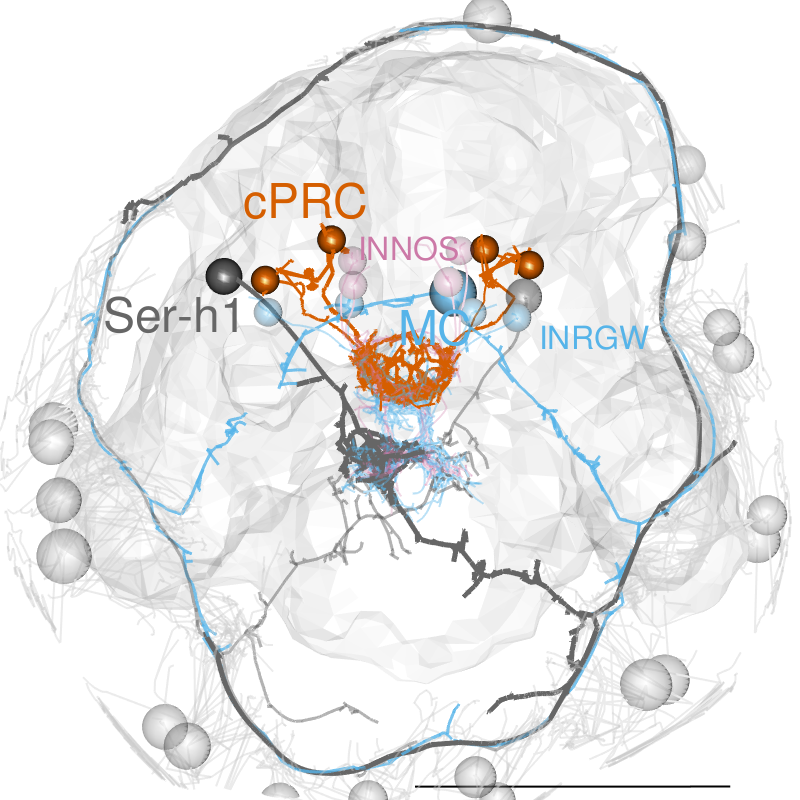
Serotonergic neurons to activate cilia
Ser-h1 neurons, EM reconstruction
Strong cPRC activation after UV exposure
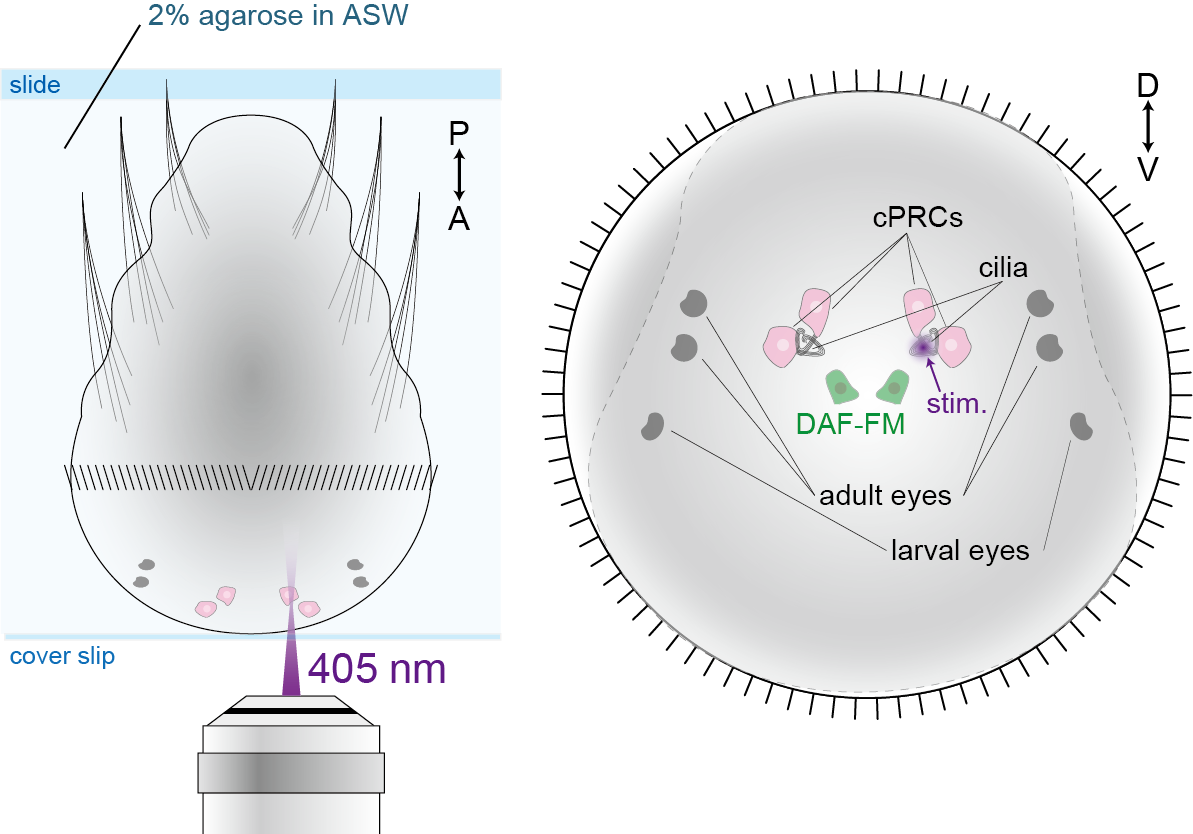
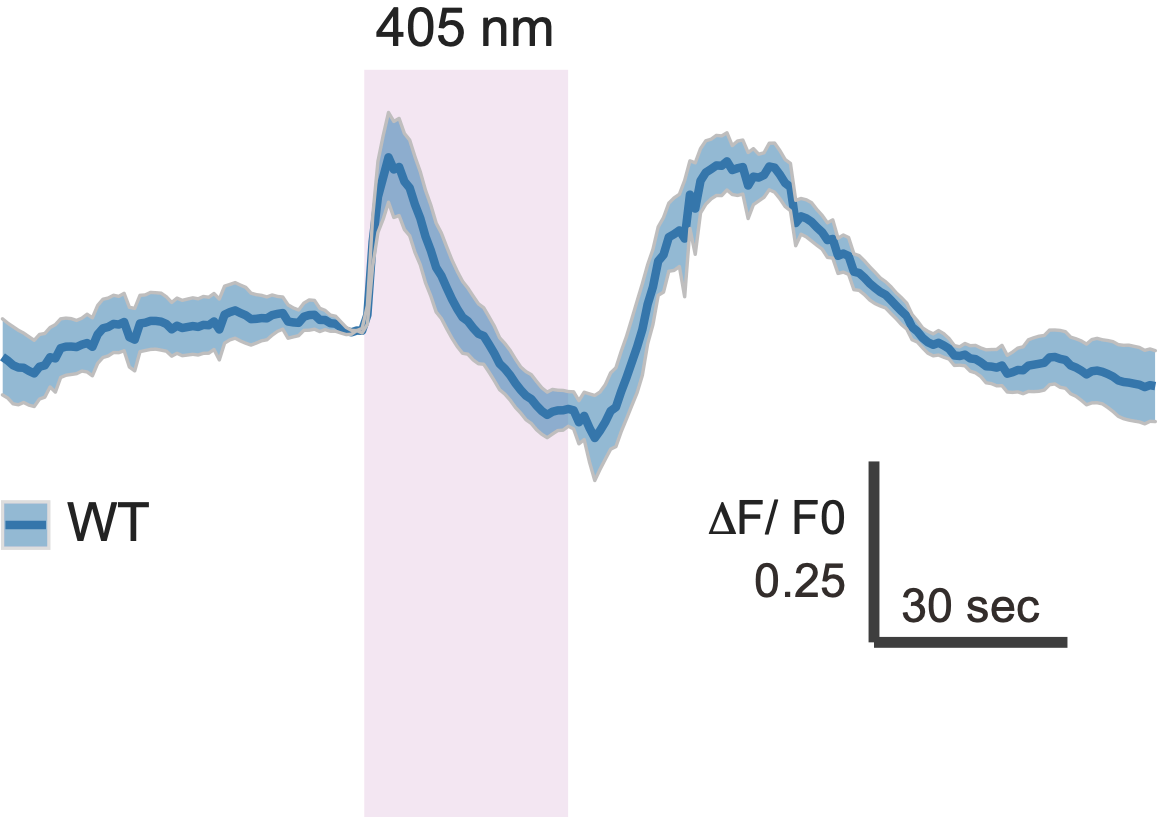

UV response is c-opsin1-dependent
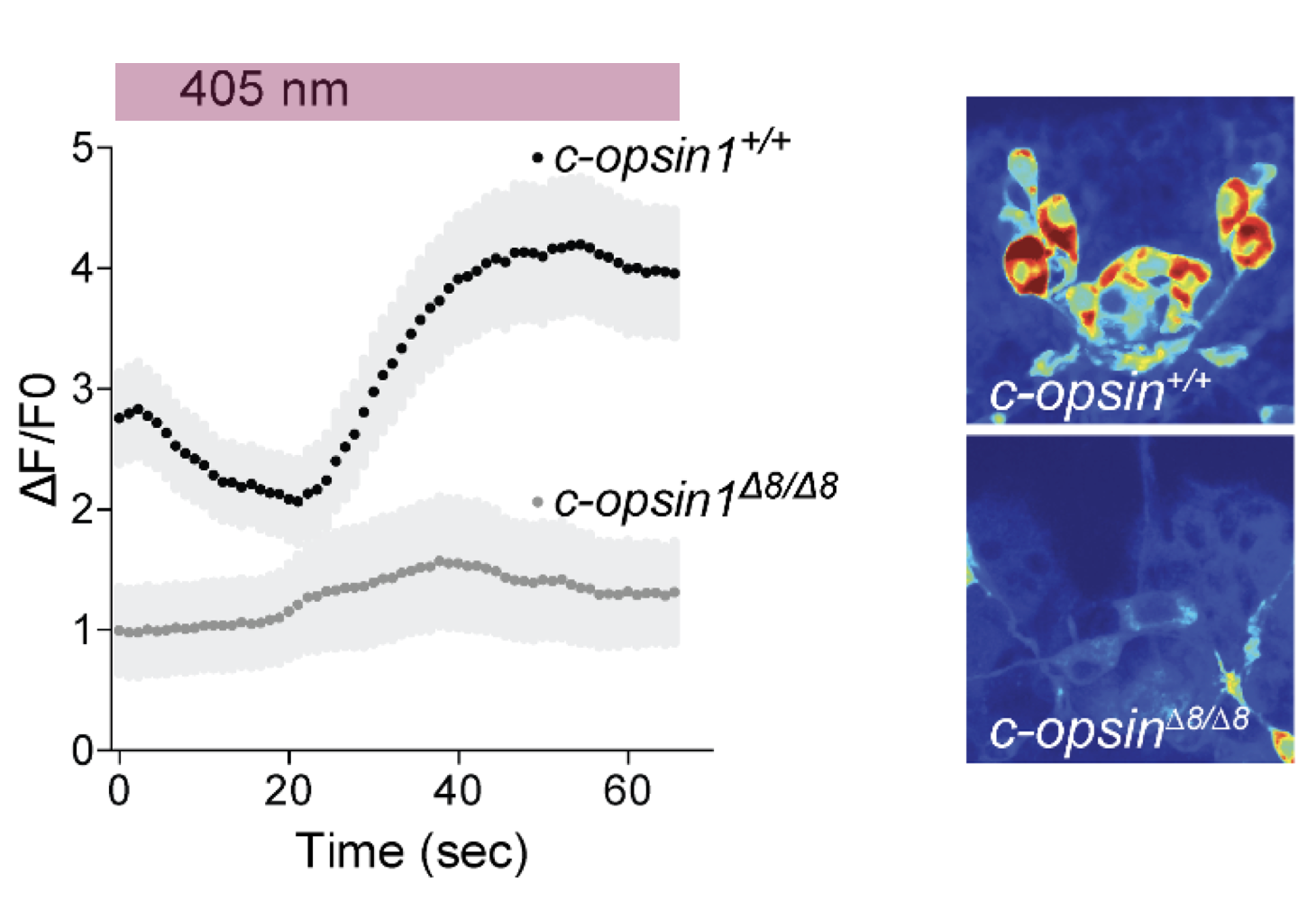
Nitric-oxide synthase in postsynaptic interneurons

NO is produced in the neuropil after UV stimulation
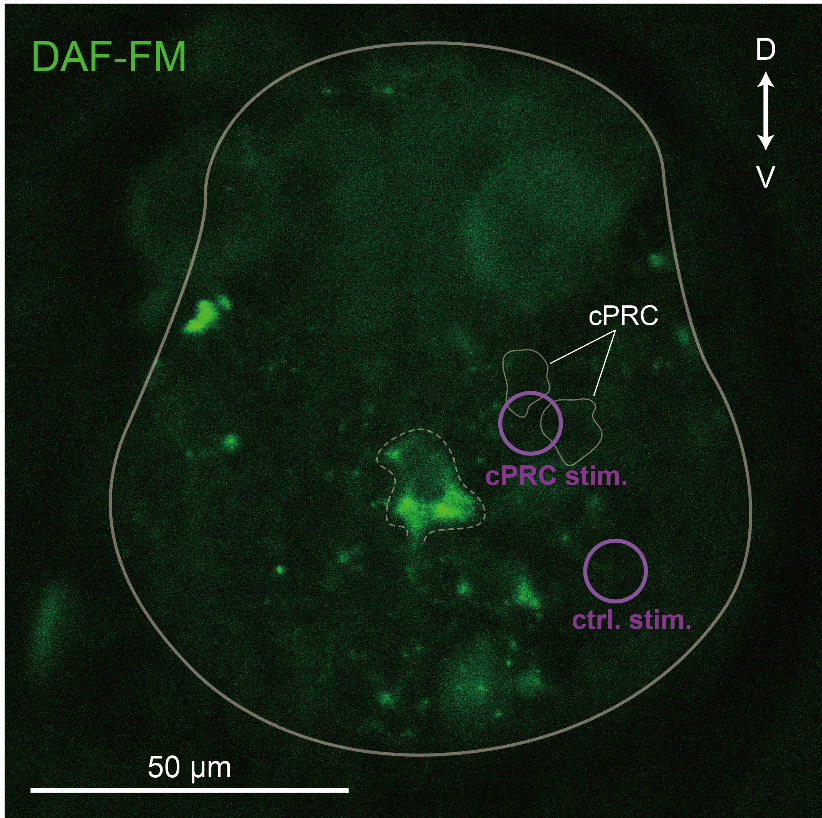
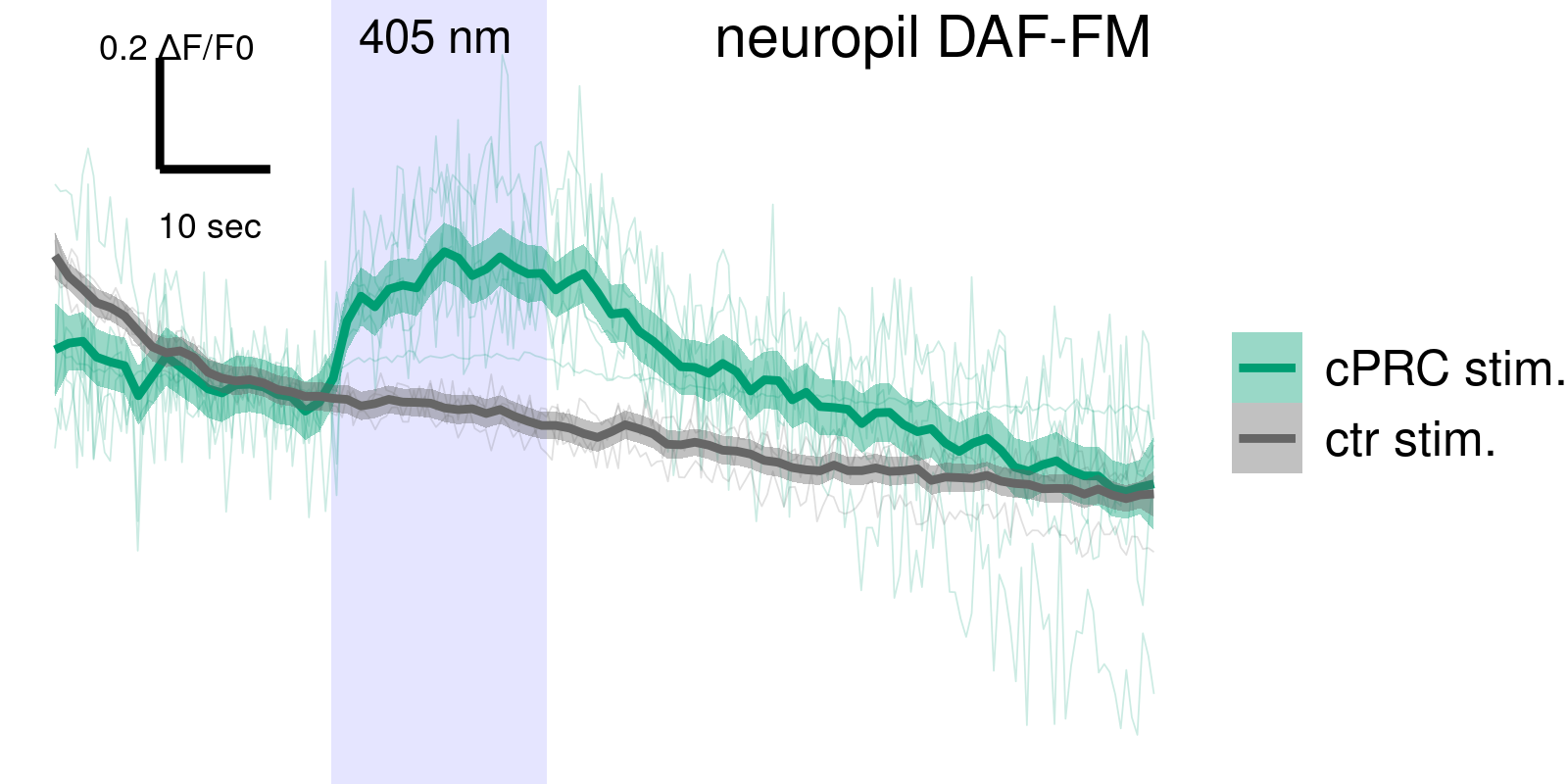
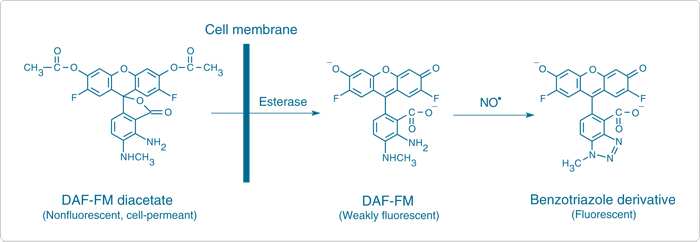
NOS mutants have altered cPRC response
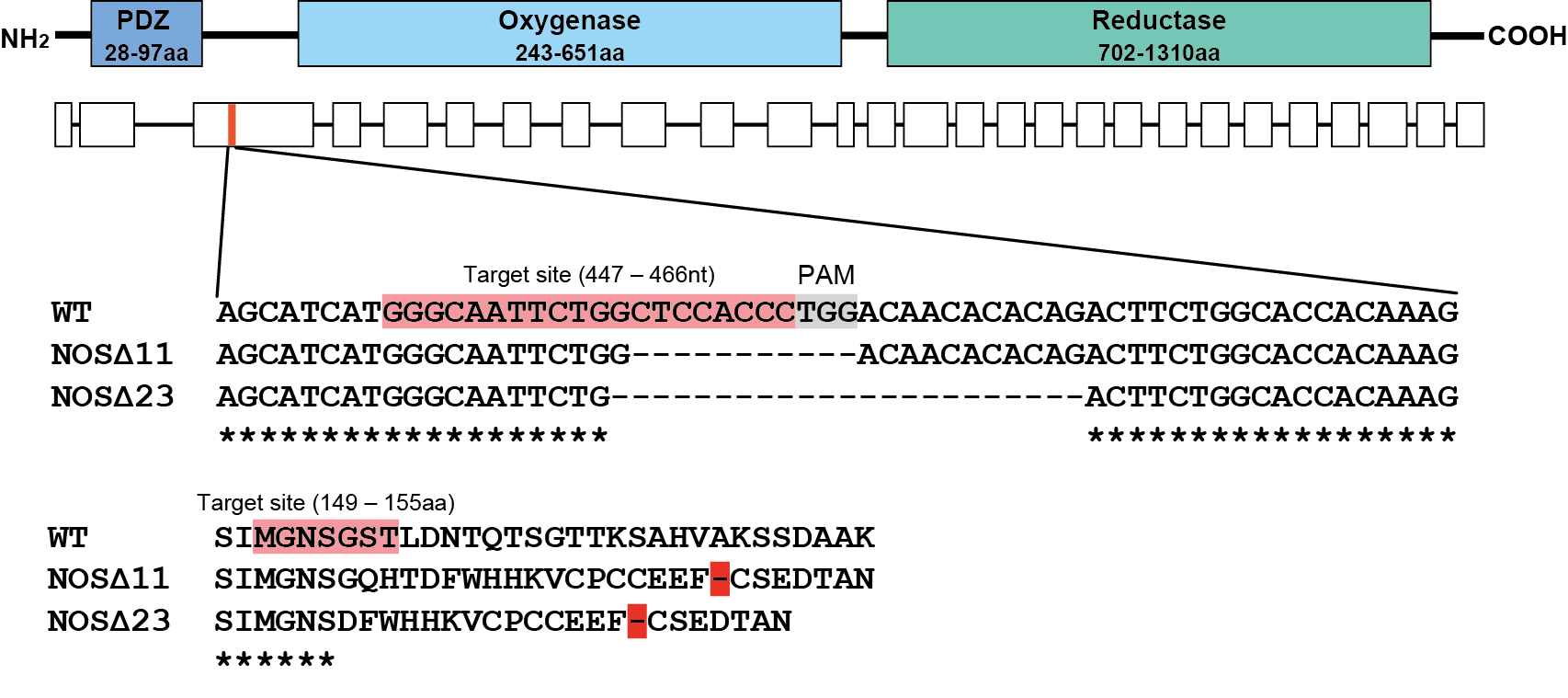
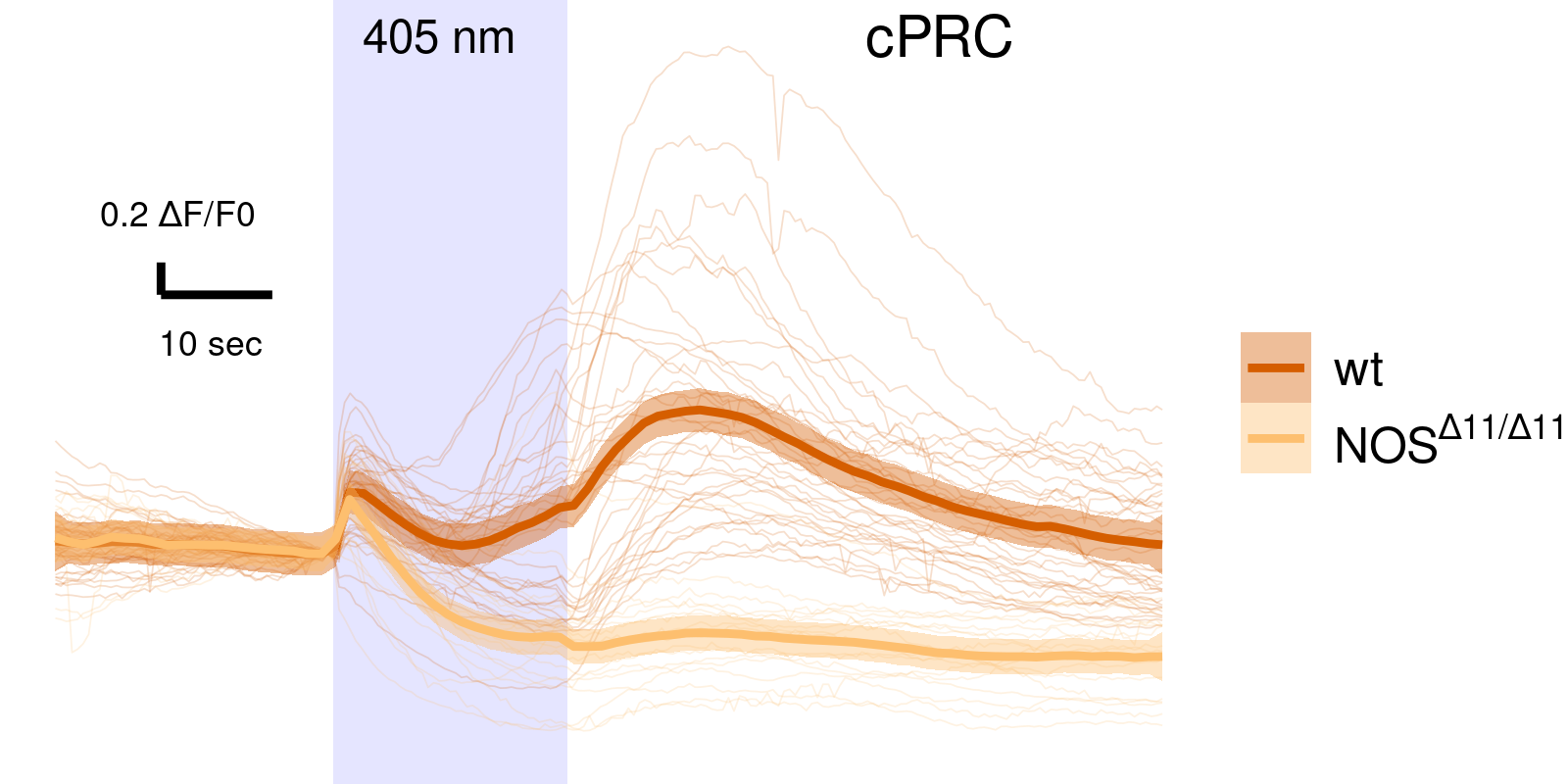
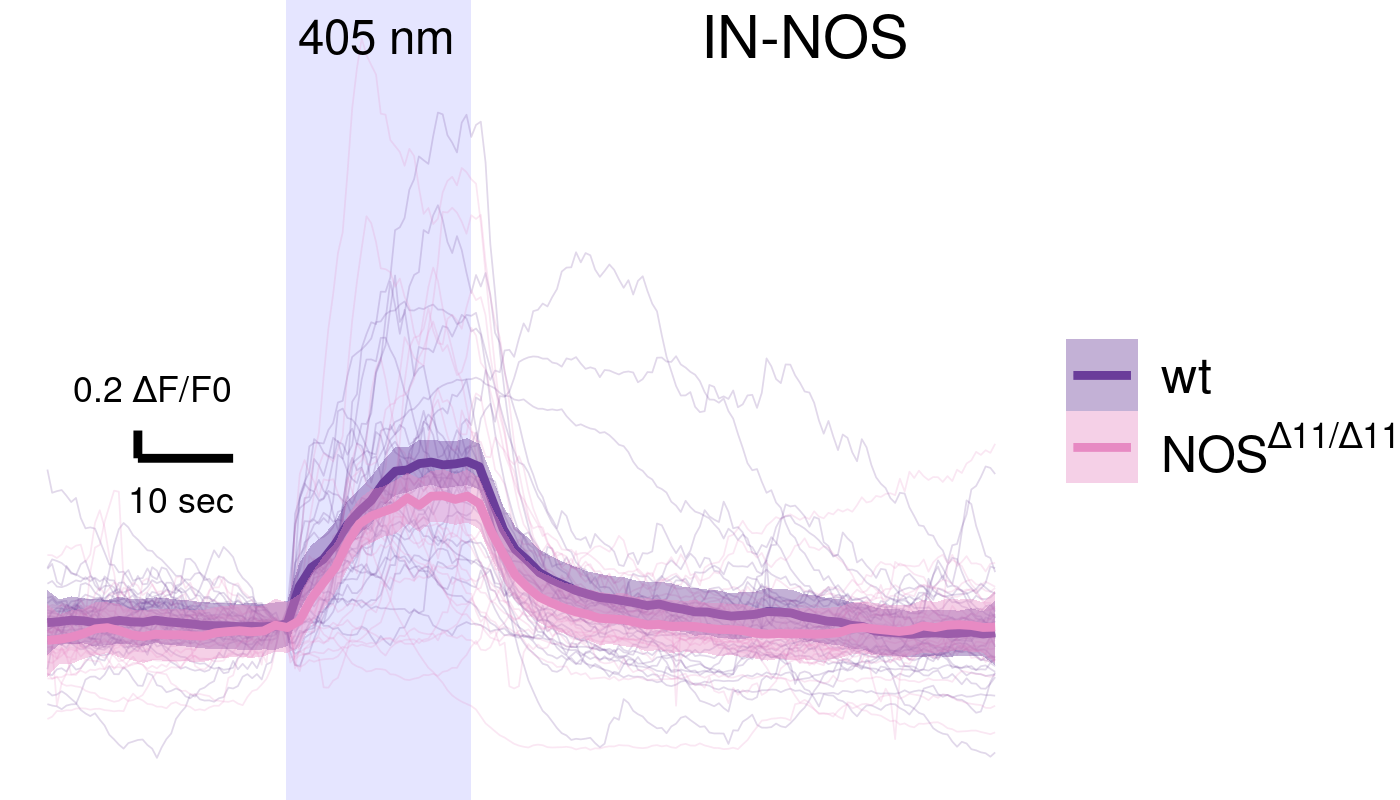
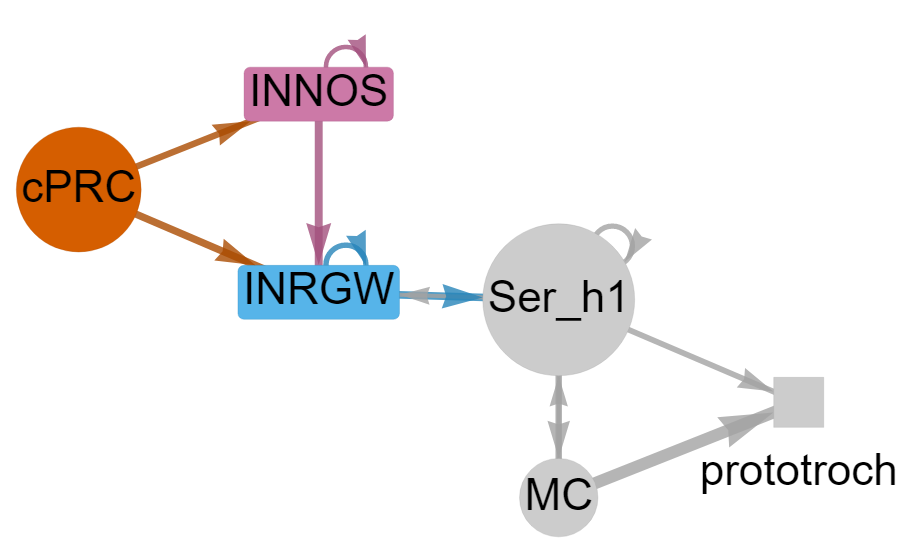
NOS mutants have altered INRGW response

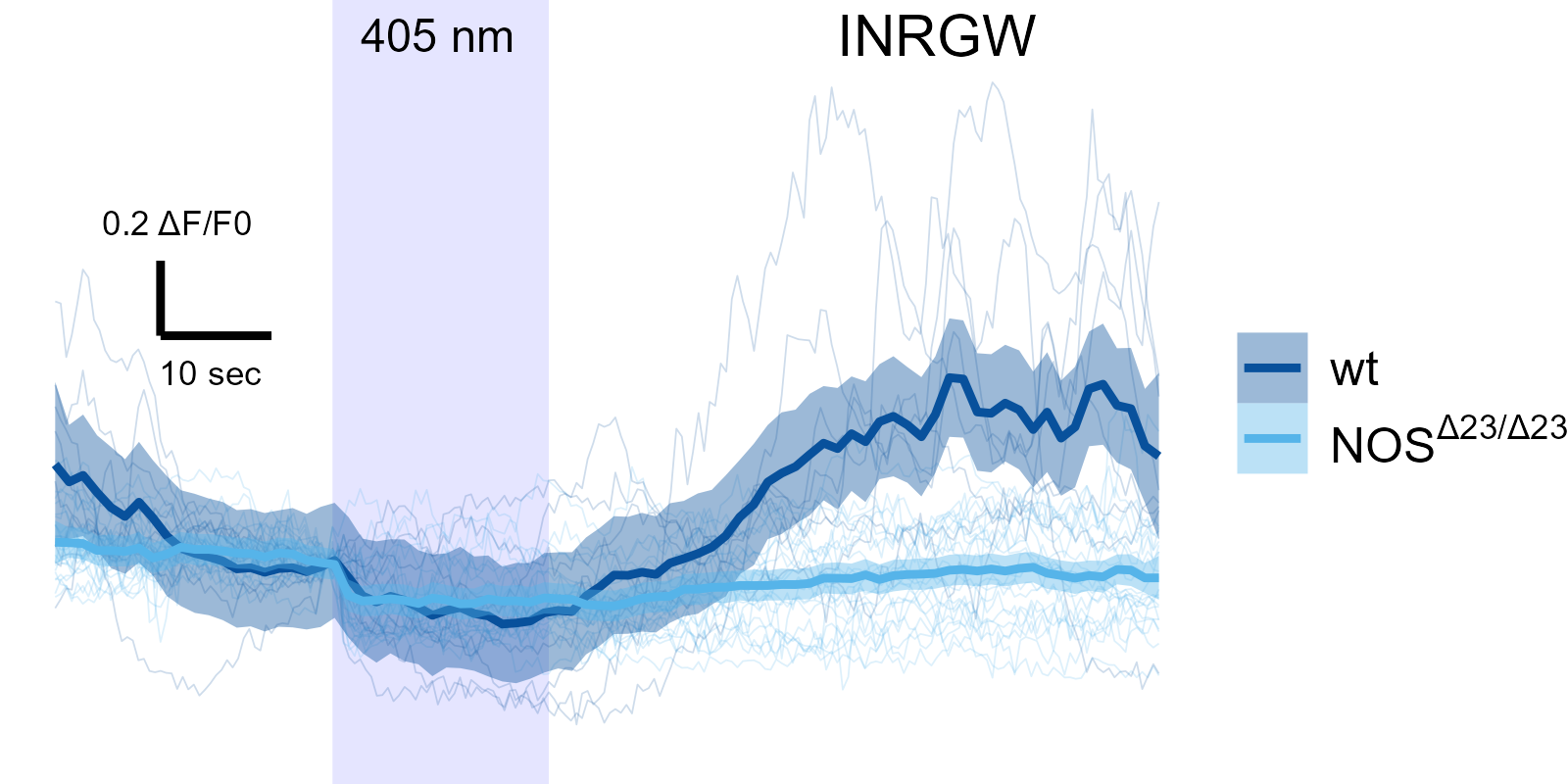

Ciliary response to UV in wt and NOS mutants

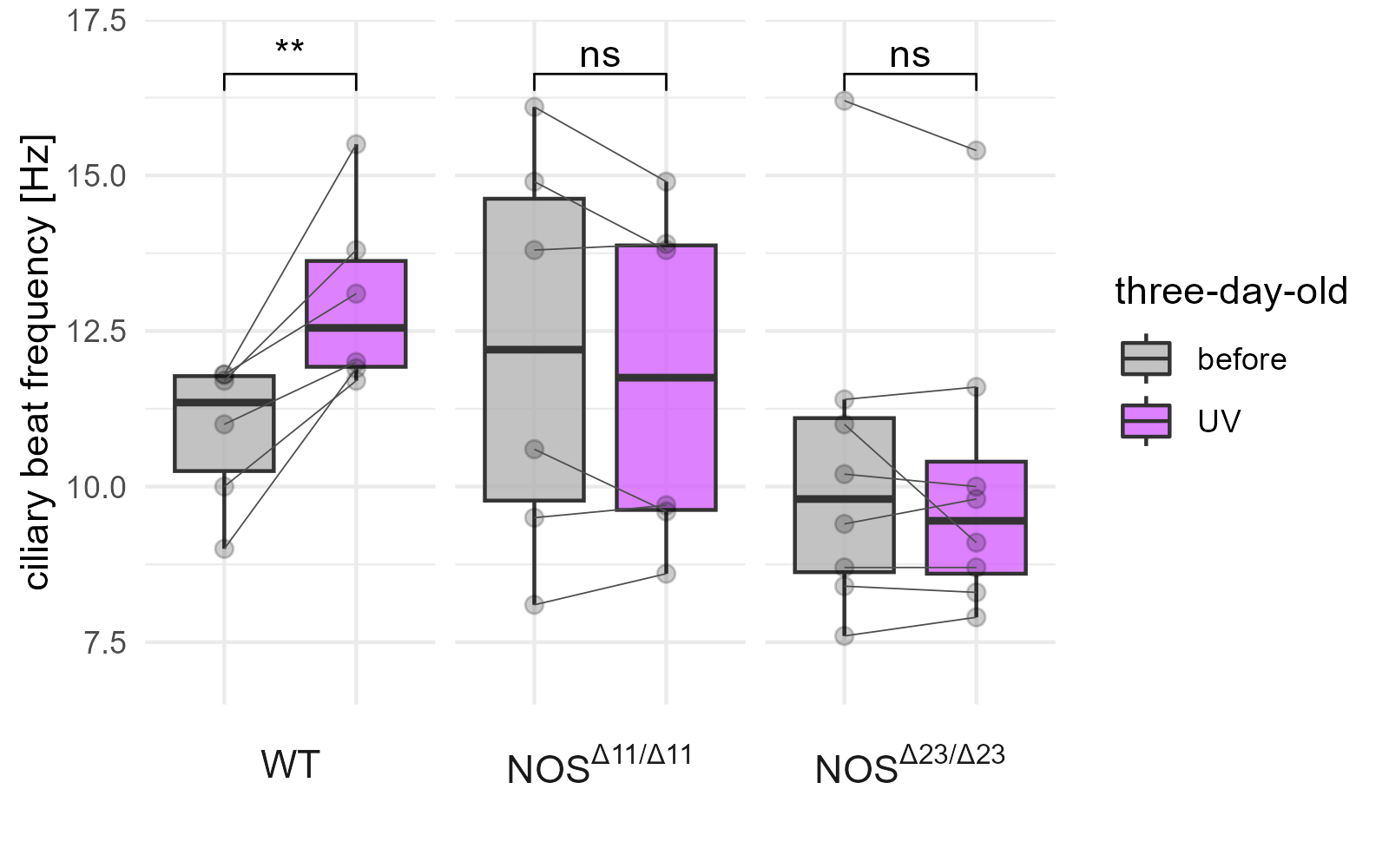 ciliary beat frequency
ciliary beat frequency
![]() Swimming speed
Swimming speed
NOS mutants show defective UV avoidance
![]()
NO signal is short-range
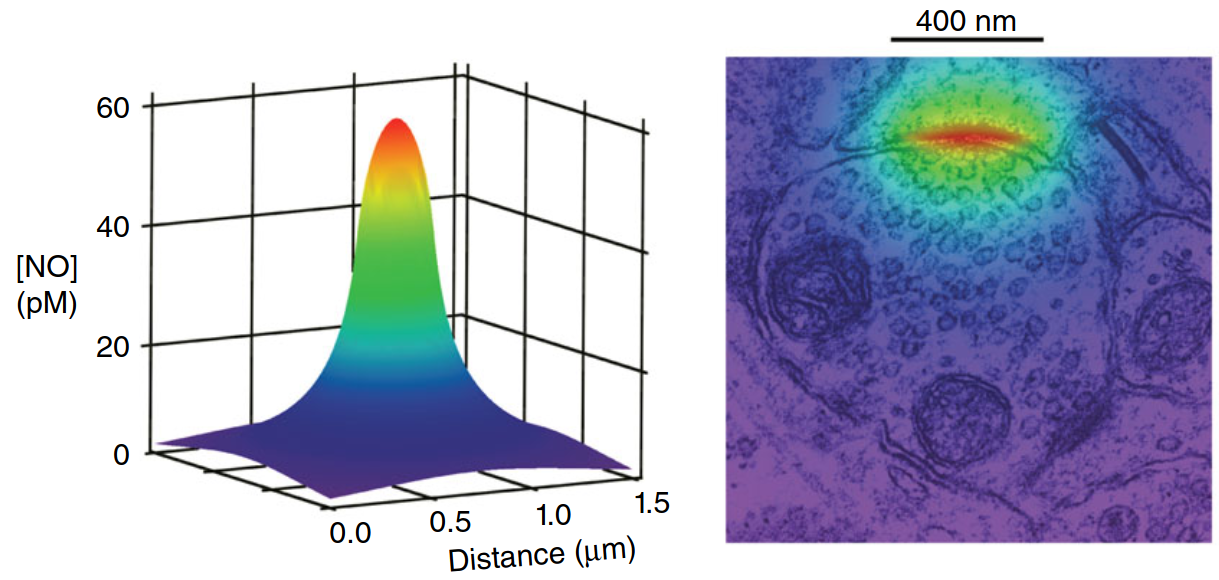
NOS protein in the INNOS dendritic compartment

An unusual guanylyl cyclase in the cPRCs
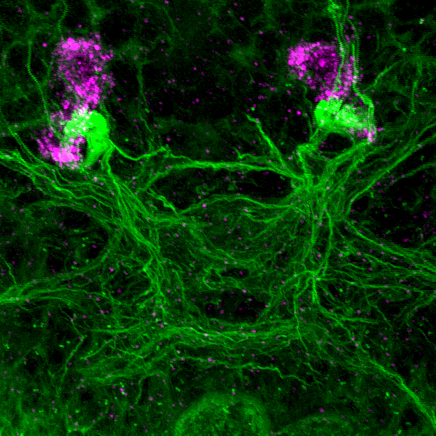
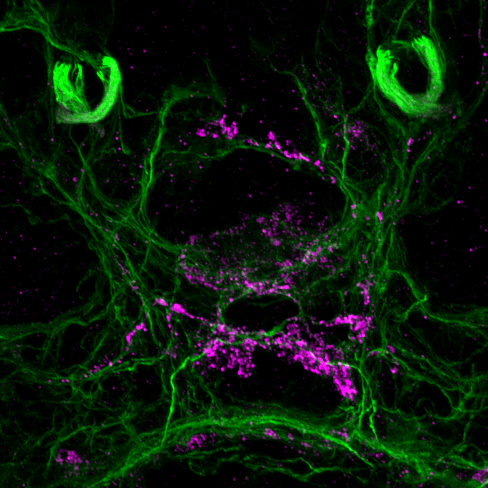
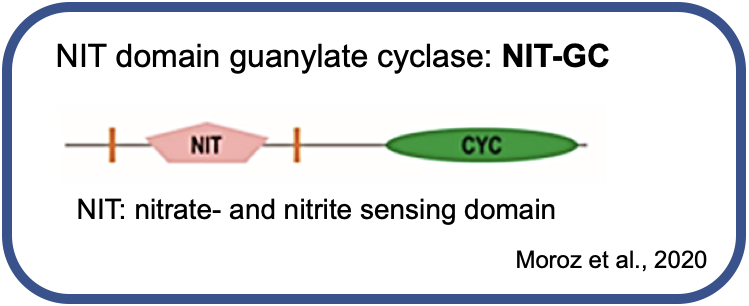
An unusual guanylyl cyclase in the cPRCs
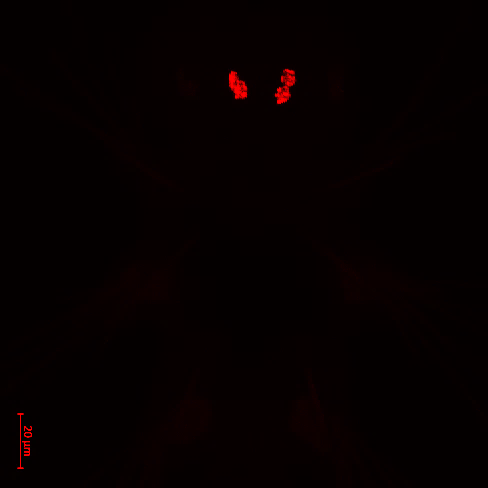
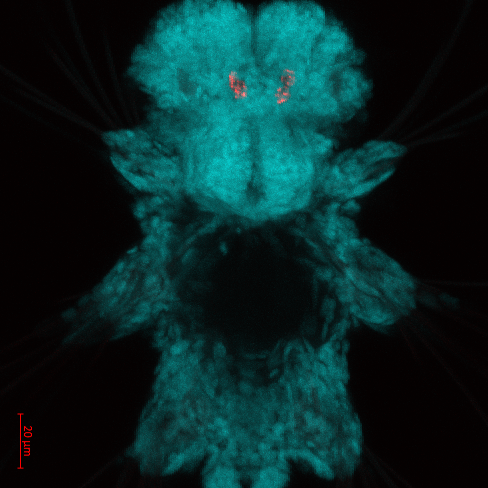
NIT-GC1 producs cGMP upon NO addition
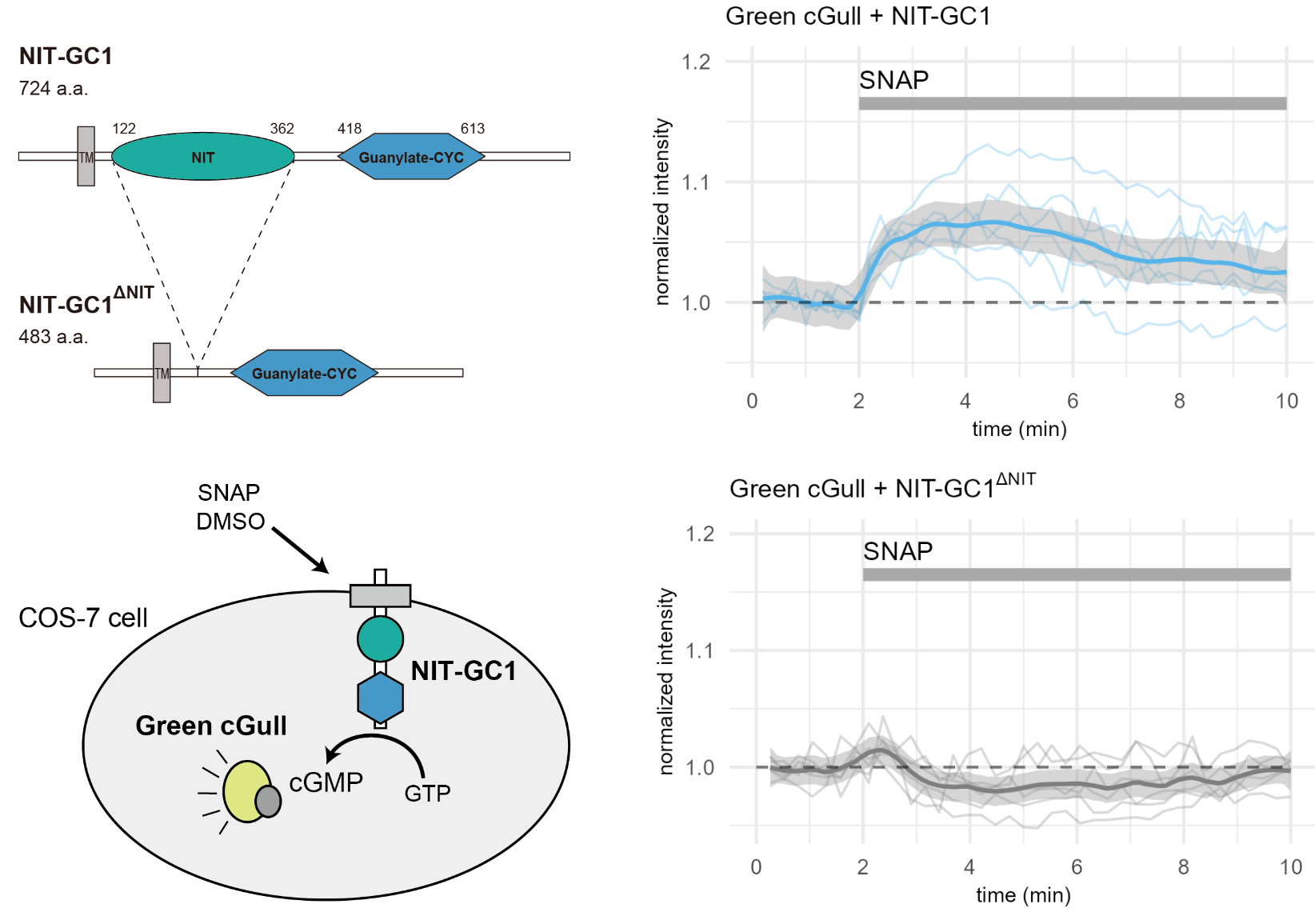
NIT-GC morphants have altered circuit activity
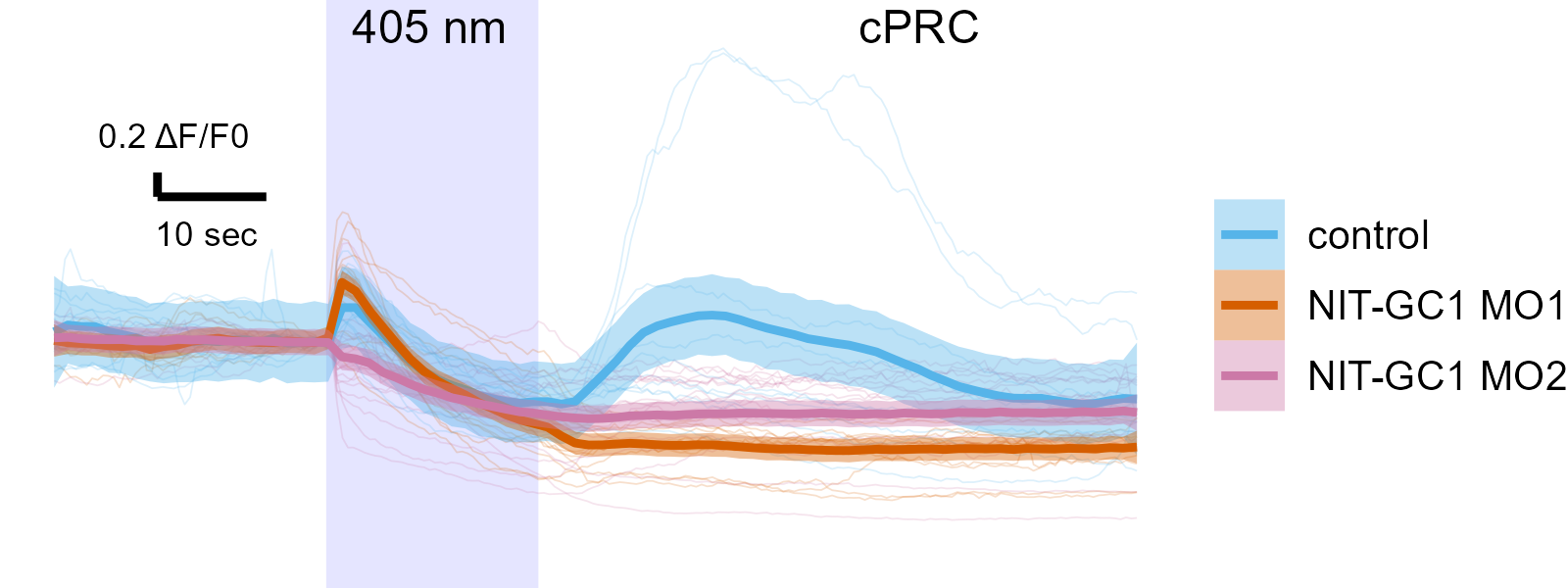

Mathematical modelling of the circuit
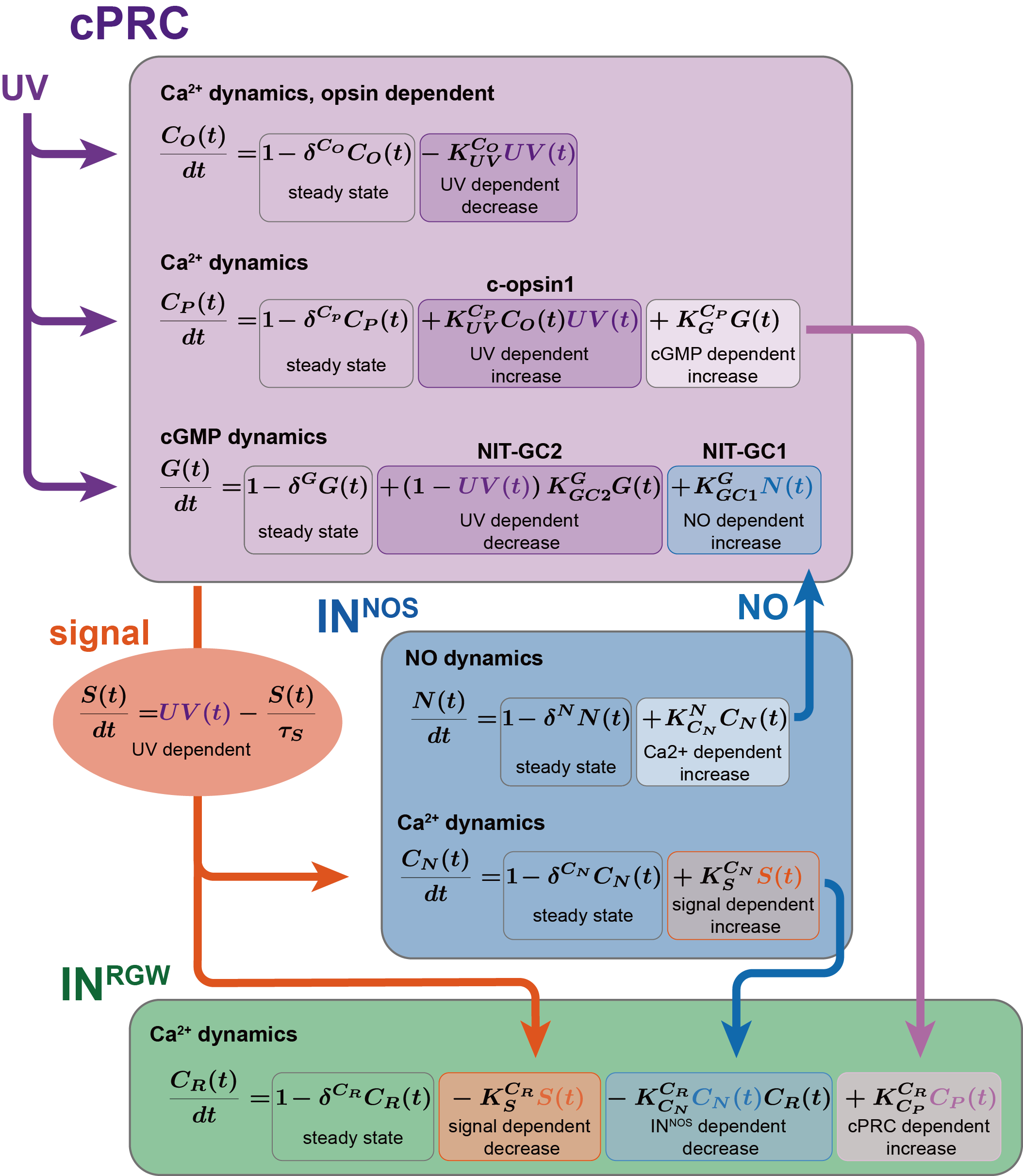
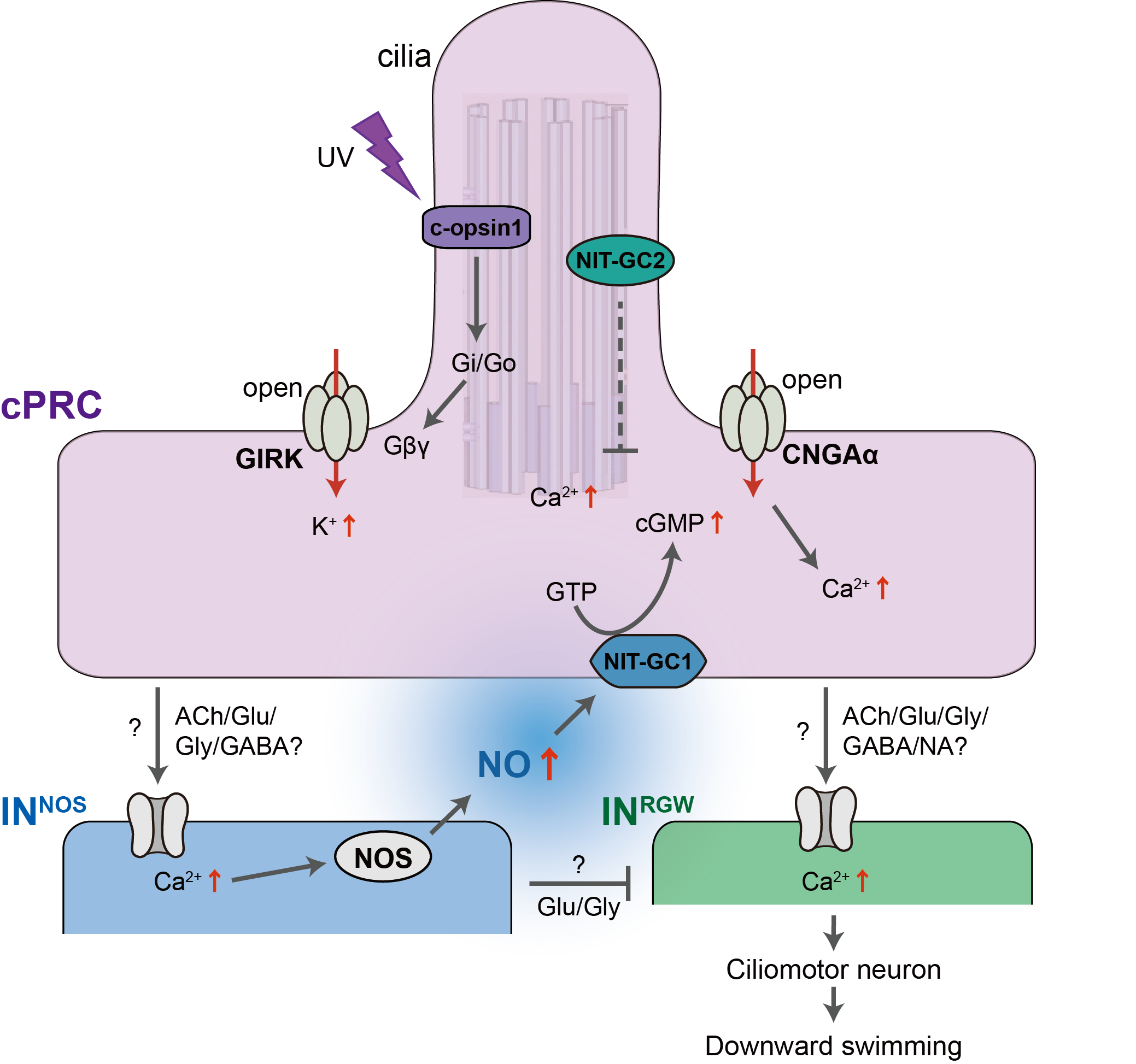
Acknowledgements
Heidelberg
- Alexandra Kerbl
- Sanja Jasek
- Emily Savage
- Benedikt Dürr
- Simone Wolters
- Lara Keweloh
- Kevin Urbansky
- Suat Özbek
- Maike Fath
- Ibrahim Akhtar
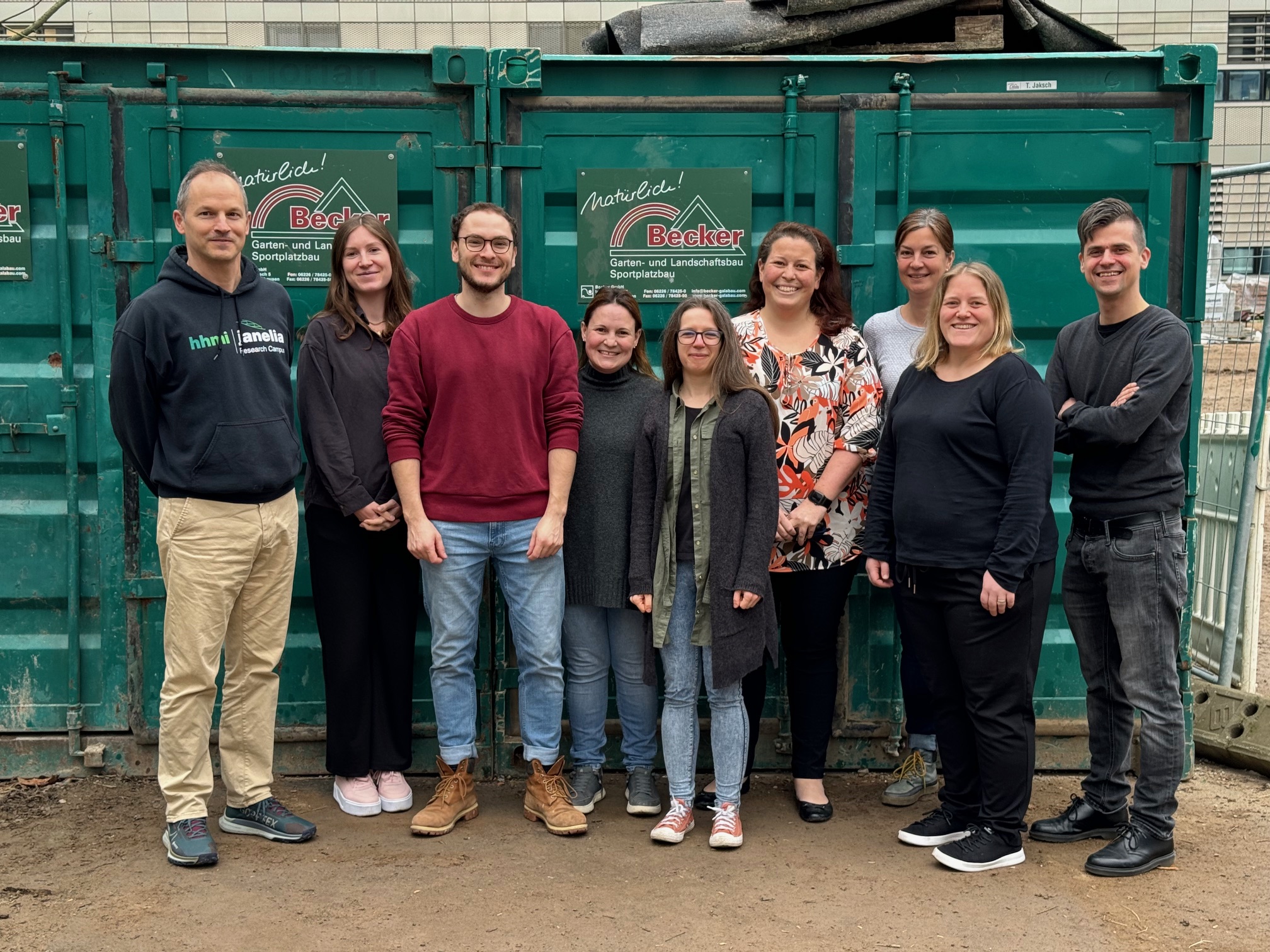

Exeter
- Kei Jokura
- Emelie Brodrick
- Luis A. Bezares-Calderón
- Luis Yanez
- Victoria Moris
- Daniel Thiel
- Adam Johnstone
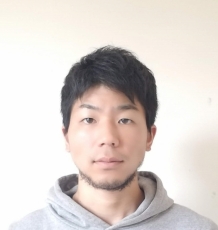

Title

- a
Title

- a
Title

- a
Title

- a
Title

- a
Title

- a
Title

- a
Title

- a
Title

- a
Title

- a